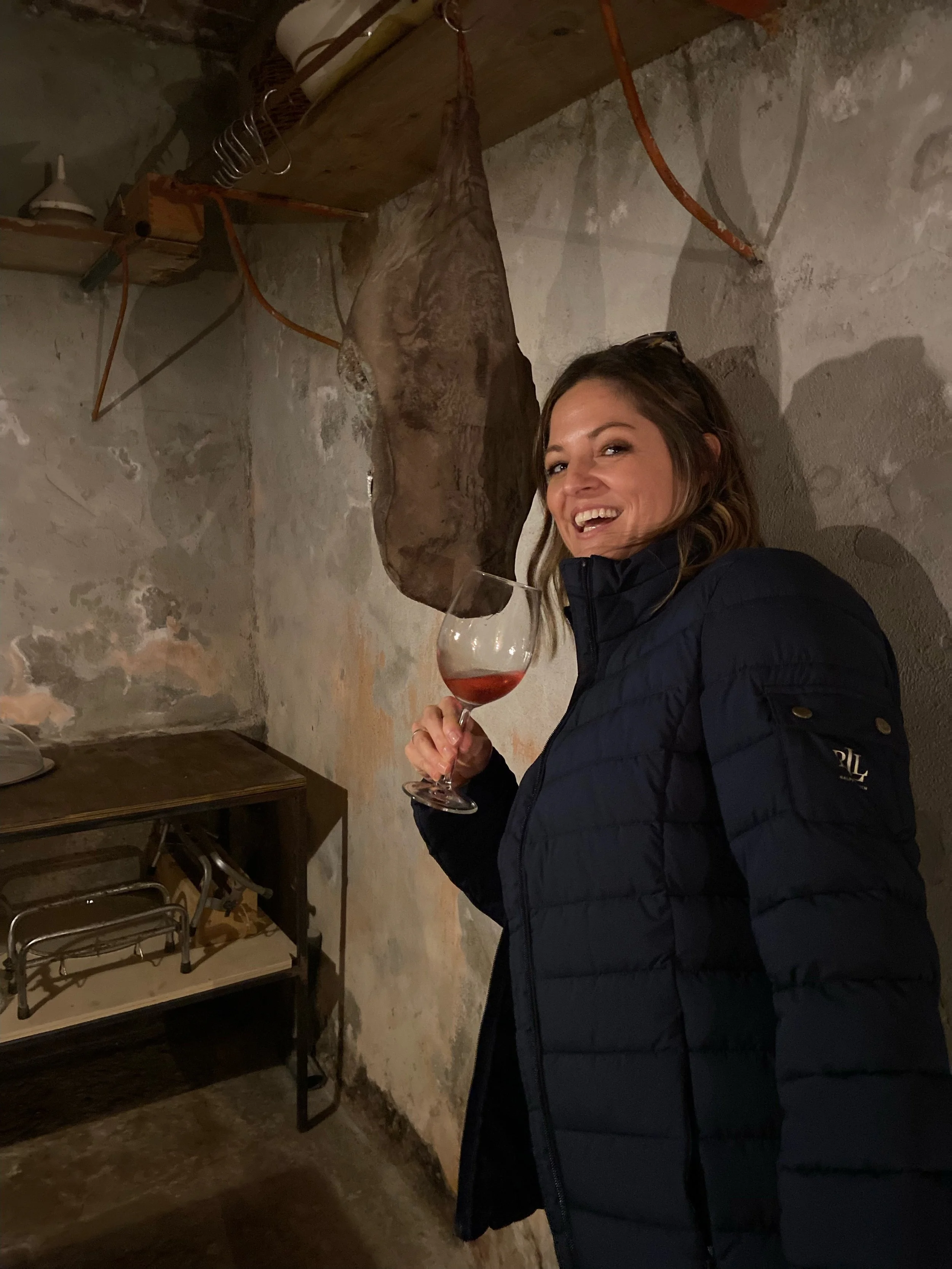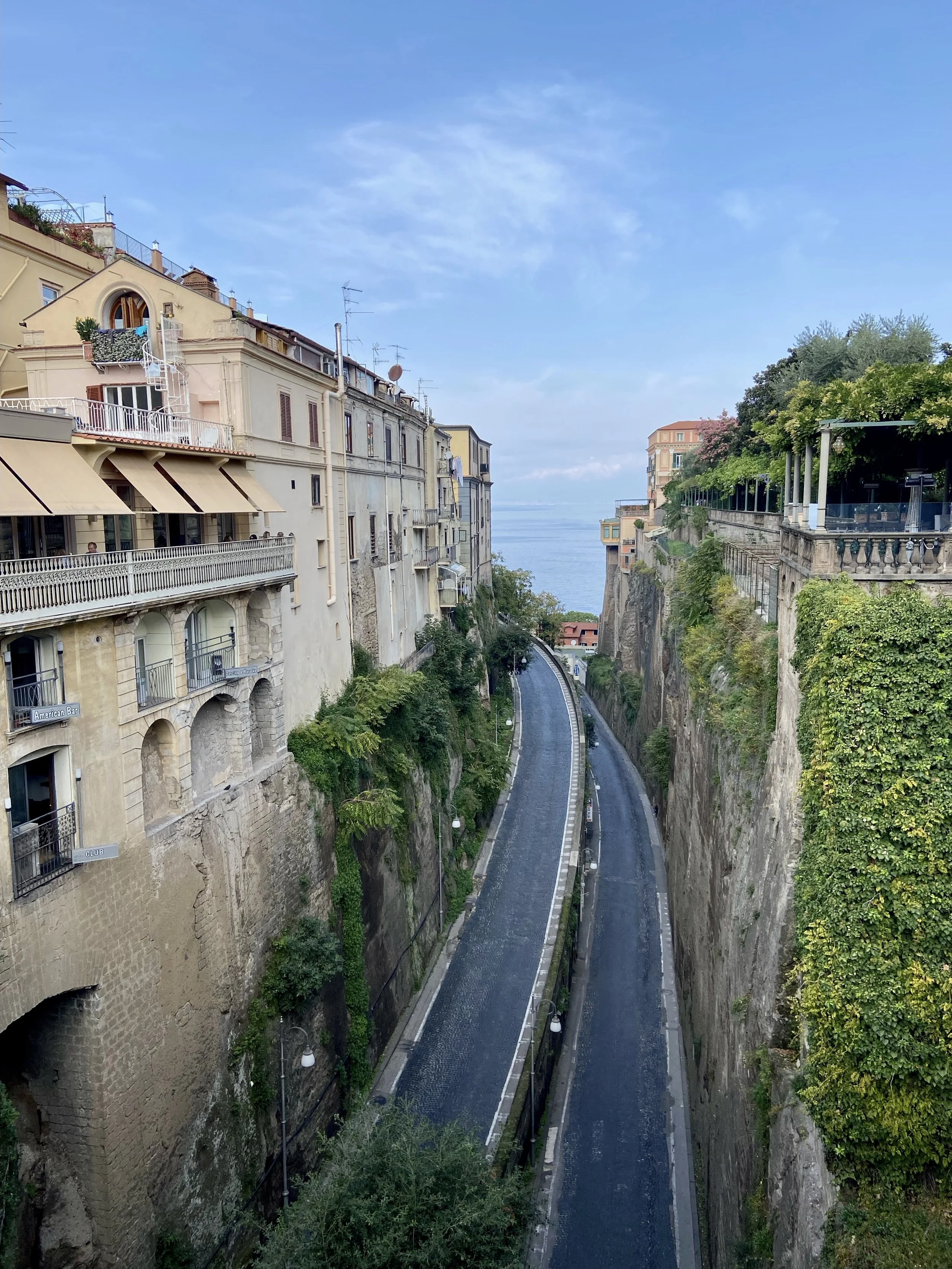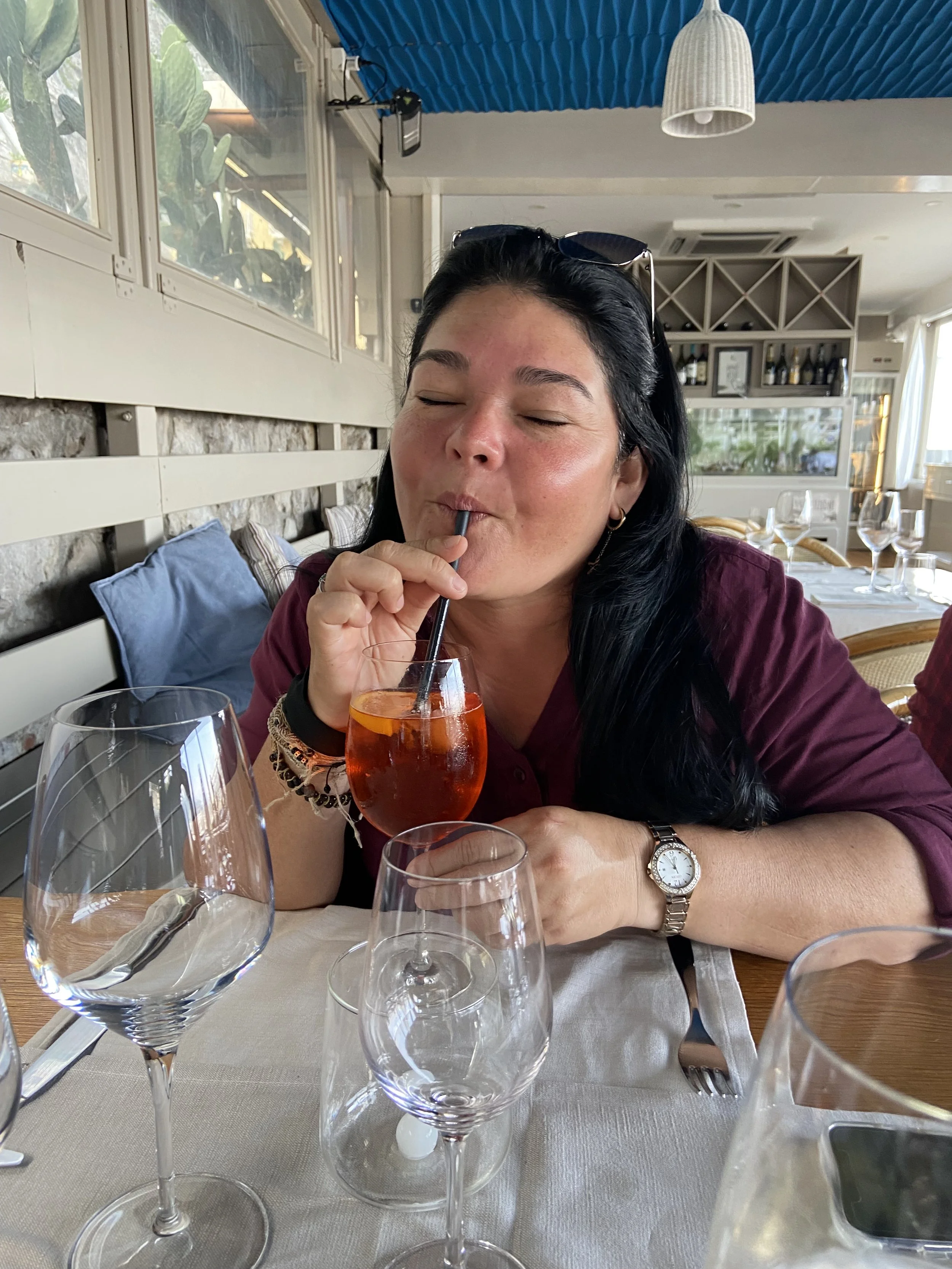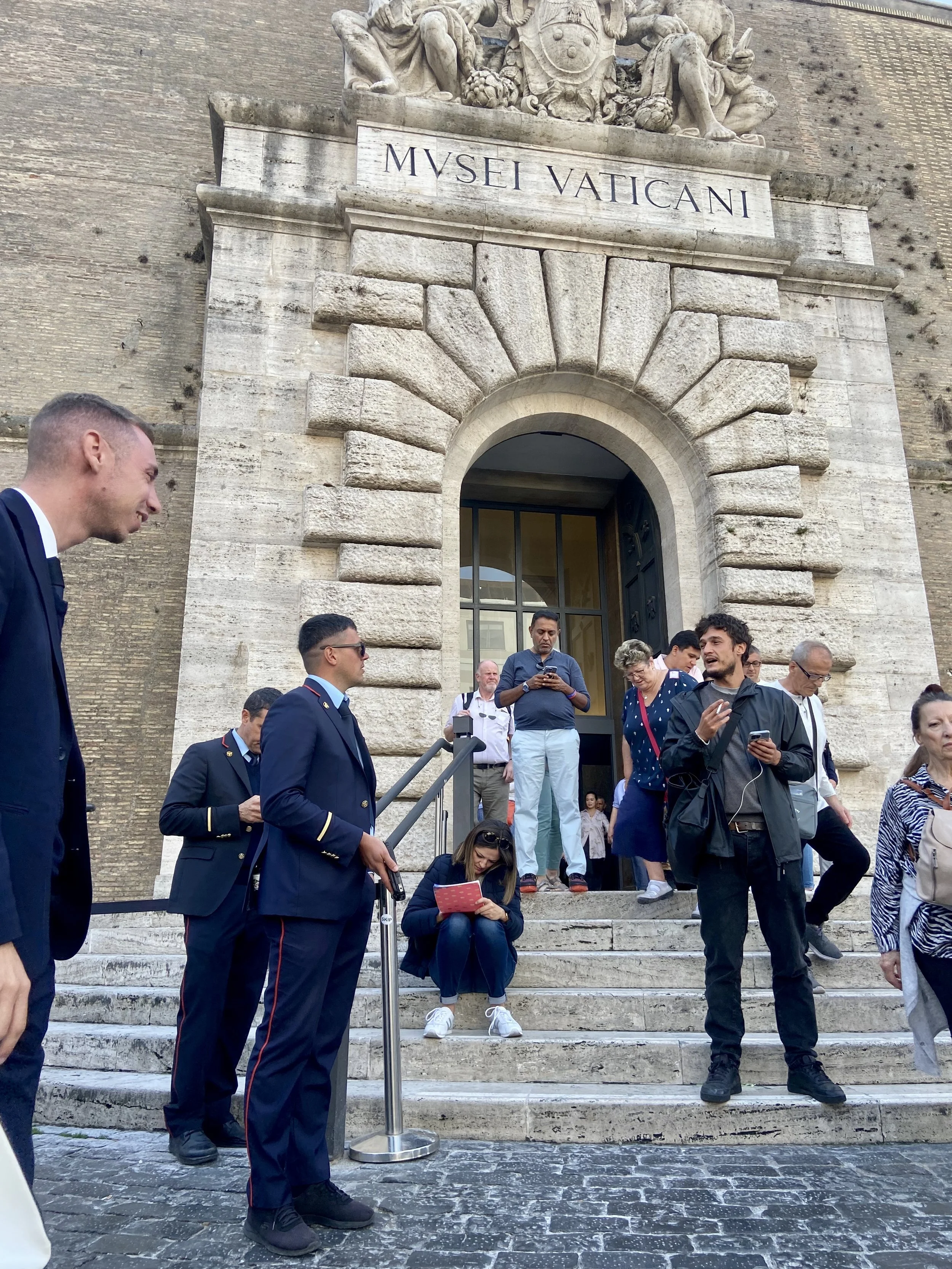When Life Hands You Lemons, You Might Be In Italy
People travel differently. Some like setting off on a solo adventure, using apps and advice to find their way on the fly. Me, I prefer to tuck into a backseat while someone who knows the terrain carries me along like the coddled dogs I see at the airport. Thus, when my friends invited me to jump on to their fourth trip to Italy, I jumped on, and fast. However, knowing I had visited Europe several times but not yet Italy, they hesitated. “We don’t know what you’ll want to see,” they said, “but our friends are joining and we were already planning to take them to our favorite spots. We kind of have it all mapped out.”
I nodded. “You promise?”
I was craving Italy’s food, of course, but in studying a bit more of church and world history, I wanted a glance at its land and relics as well. You have Rome with Roman everything, Florence with the birth of the Renaissance, and at the end of the day, some of the world’s most spectacular natural beauty. Our itinerary would begin at Lake Como in the north, head south through Florence, down to the Amalfi Coast, and end in Rome. A great starter kit to Italy, methought. I was also looking forward to traveling with this group. Ryan and Kelly, the pastors of my church and also my friends, had invited their missionary friends from Colombia to join. Our church partners with Medical Ministry International, which travels the Amazon River bringing medical treatment and the gospel to some of the most remote tribes on earth—some, in fact, have never encountered an outsider. Juan Alan and Leonor work full time for the ministry, and because he also holds a UK passport, Juan Alan has been able to visit Lifehouse several times to share the work of the ministry with our church. His wife, however, cannot get a visa to the States for at least two years, and has never visited the US. Moreover, while Juan Alan speaks English, Leonor speaks only Spanish; and I busted it during the months leading up to the trip to brush up on my Spanish skills so that we might have the most basic, at least, of conversation. Thankfully, Leonor was kind enough to speak slowly so I could keep up, and we became fast friends.
That meant, of course, that I was focusing on Spanish and not Italian. I crammed a couple of phrases before going—Buongiorno! Grazie! Dov'è il bagno?—but these ended up being more than sufficient. Italy is by far the easiest European country I have navigated linguistically.[1] When they see you struggling with the menu or can tell by your Texan “Bahn-JOR-no!” that one has just reached the end of one’s travel phrasebook, Italians will happily switch to halting yet eager English, no hint of indignation or coolness at your not having fully learned their native tongue before darkening their hallowed doors (looking at you, France). They would even often jump in with Spanish for Juan Alan and Leonor, if they could. What a global and gracious people. I was immediately grateful for this.
Lake Como
We begin with the bougiest area of our travels. (Or was that Amalfi? They might be tied.) George Clooney lives in these fancy hills, and I roamed the streets shouting his name, but he chose to ignore me. Speaking of streets, what an adventure (death wish?) to drive here. Because the houses are built up into the steep hills surrounding the lake, the streets are extremely narrow and consist of tight switchbacks that locals (and Ryan) like to take at high speed. The street is no wider than one good-sized Texas lane, and that’s for two cars, going two ways. At each corner, you take a sharp hairpin turn in the opposite direction; often, our tiny rental couldn’t even make the full turn radius in one go. If another car is approaching the same blind corner, you both, by Italian magic, will quickly determine who slams the brakes and swerves to let the other pass. Sometimes there’s a wide-angle mirror on the corner; sometimes not. You learn to feel the hidden corners and hope for the best. Italians (and Ryan) take these inch-wide roads as fast as life will let them—high cliffs on one side and a drop off into water or rocks on the other. It was exactly like all those high-speed Italian chases you see in the movies, precarious pin-tight turns amidst gorgeous and deadly scenery. Except in real life, it’s not secret agents or gangsters in hot pursuit; it’s just Monday.
The next morning, we drove to the village of Varenna, a place out of time in the lovely Lake Como hills. We walked up on a tiny postcard village with a small shop here and a restaurant there under an upper apartment and laundry-strewn balcony. We pushed through a heavy front door into a quaint and cozy space where we would be attending a cooking class with the charismatic and drily witty Moreno Maglia. (The “gl” in Italian, he explains, is pronounced like a “y”. He once asked around a New Jersey borough for his relative, “Joe Mal-y-a.” They stared, stupefied, until one guy snapped his fingers. “Oh, MAG-lia! Ya lookin’ fer Joe MAGGGLIA.”)
Moreno runs cooking classes in his ancient village cottage, a modest two-story with living quarters on top, that has been in his family since 1030 AD, no big deal. This same space doubles as a cozy, and highly reviewed, family-run restaurant by night. We sat at a long table with our fellow culinary classmates, an older couple from Tel Aviv and a jet-setting Asian pair from New York. The table was laid out with local crackers and cookies, and we started with a small cappuccino as Moreno prepared his show table and regaled us with stories from his childhood. Yes, his mother’s side of the family has been in that village, indeed that very building, for a millennium, but his father’s family was newer to the region—only (he shook his head) 500 years. We New Worlders side-eyed each other and silently sipped our coffee.
We munched, snacked, and sipped as Moreno conjured up a veal tenderloin and pork sausage ravioli over the next three hours that is one of the best things I ever shoved down my gullet. Meanwhile, he laid out boards of local aged casera cheese, salame and coppa, and copious chardonnay to keep our chompers whetted. He cooked, we drank, and I’m thinking about enrolling in culinary school because I’m clearly good at it. We took a break (it’s hard work, man) to meander the lovely streets in the crisp air and sunshine and pet the languid village cats who surely must trace their litters back centuries as well. On returning, Moreno had us assemble a few of the ravioli, giving us wine-fueled confidence that we could easily recreate the entire meal as soon as we got home. He continued to share foodie bon mots with us, such as this musing on meats: “Only one unlucky animal in the world! If you’re pork, move to Middle East. If you’re cow, move to India. If you’re chicken—you going to die.” As we feasted at last on our veal tenderloin with slowly coaxed demiglace, pillowy ravioli, and now red wine added to the white, enjoying the fruit of our long morning’s labor and really settling into this whole Italy thing, we asked ourselves the next and natural question between bites: “So, where’s dinner?”
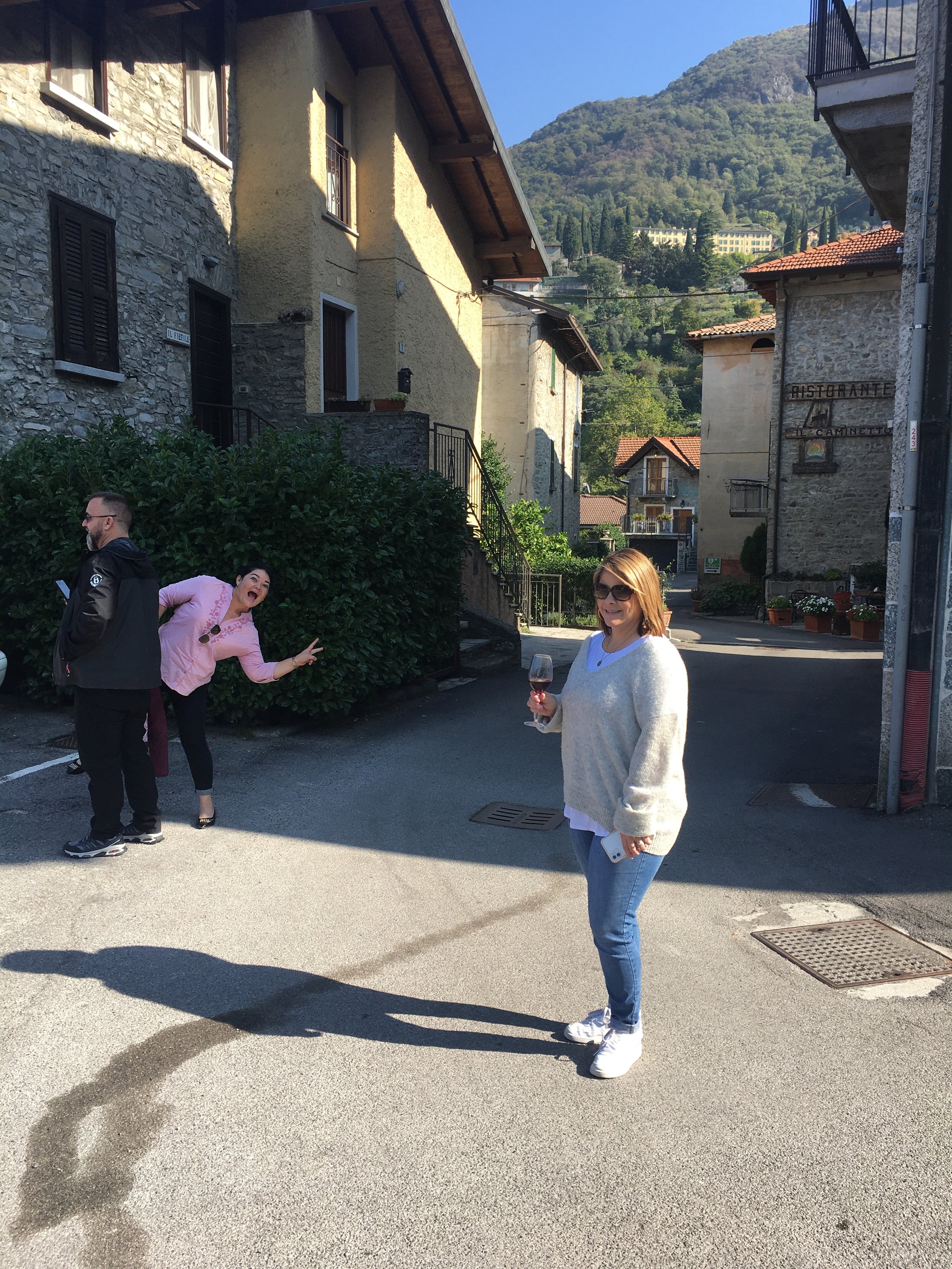
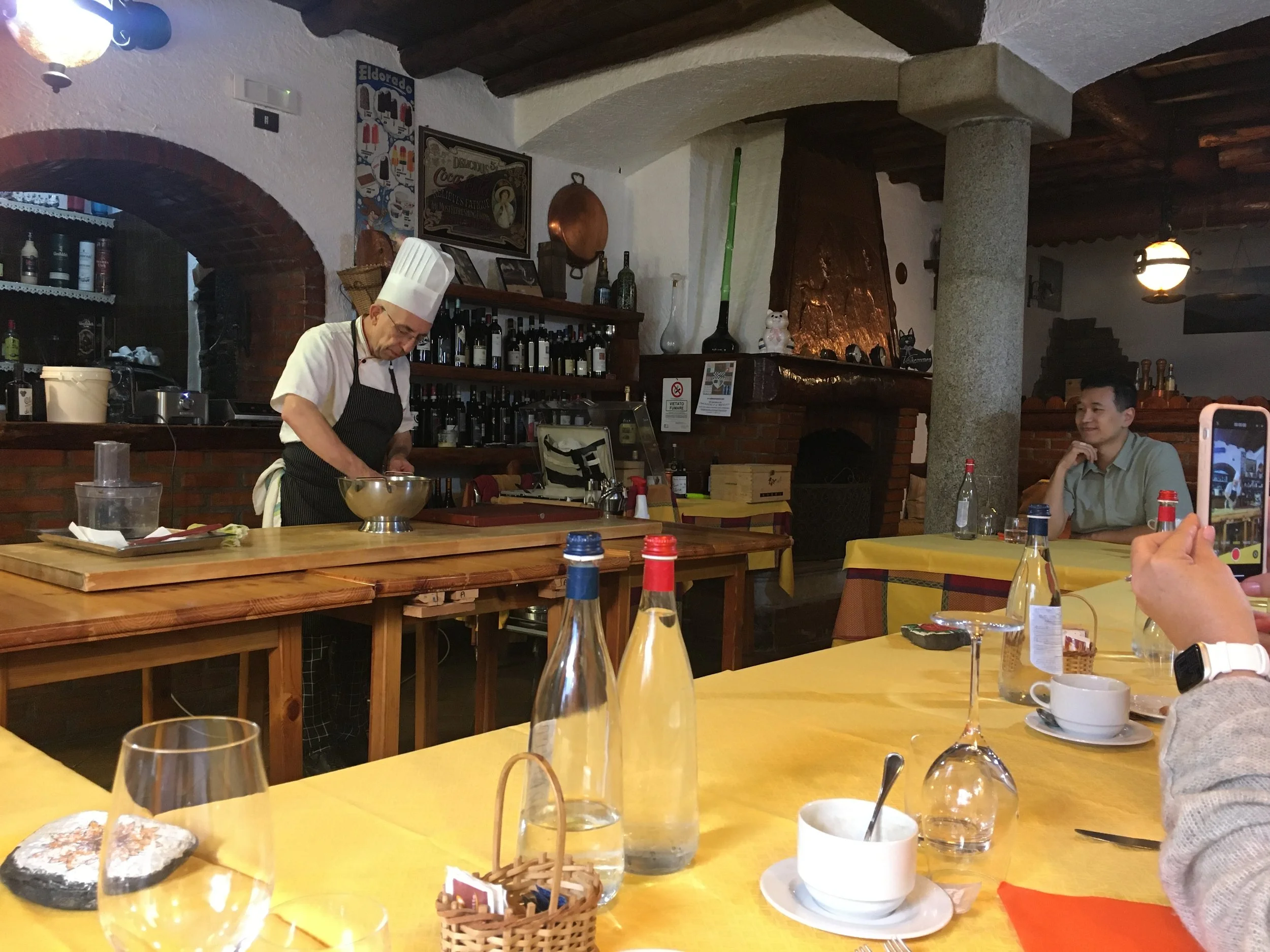
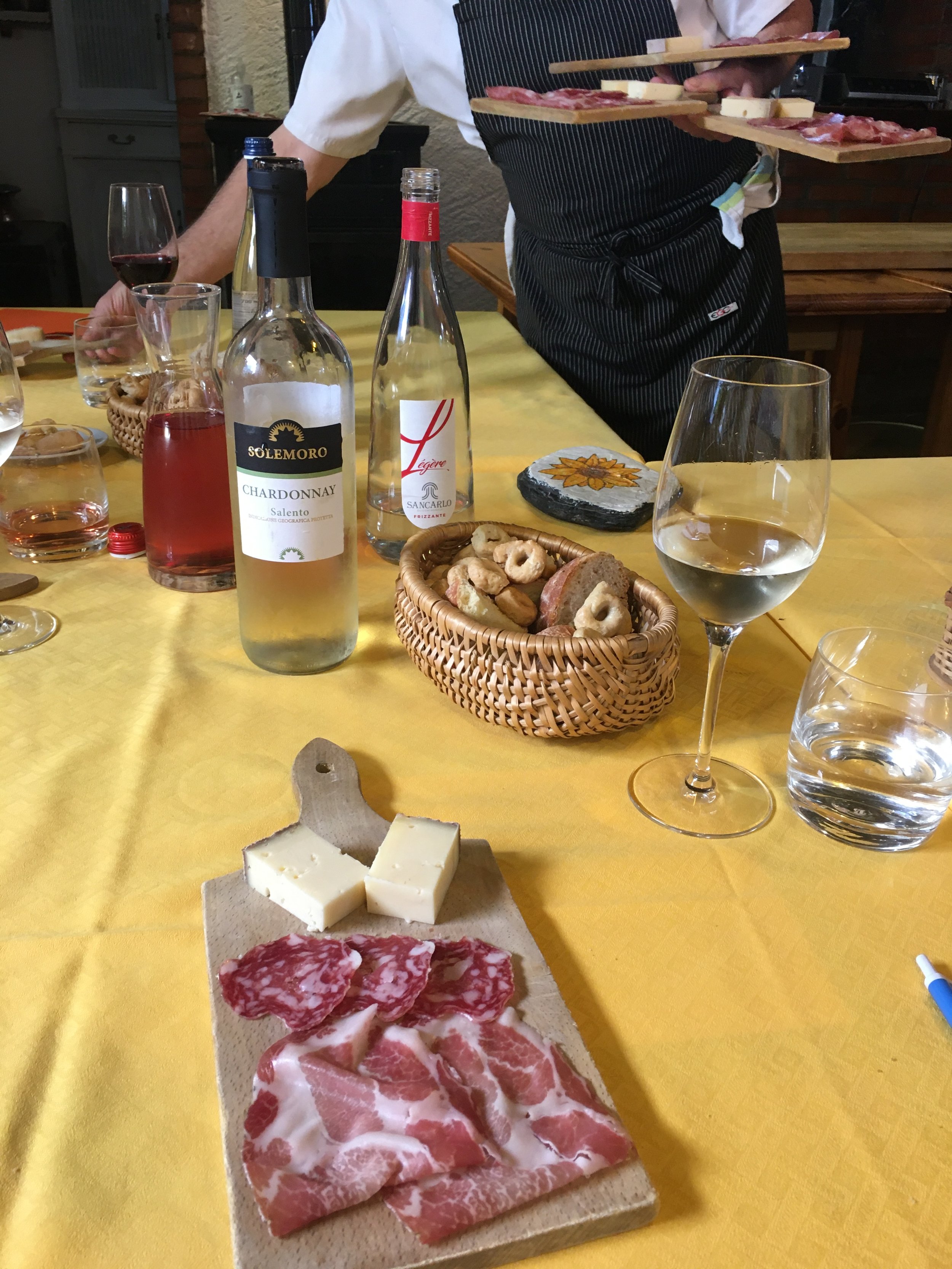
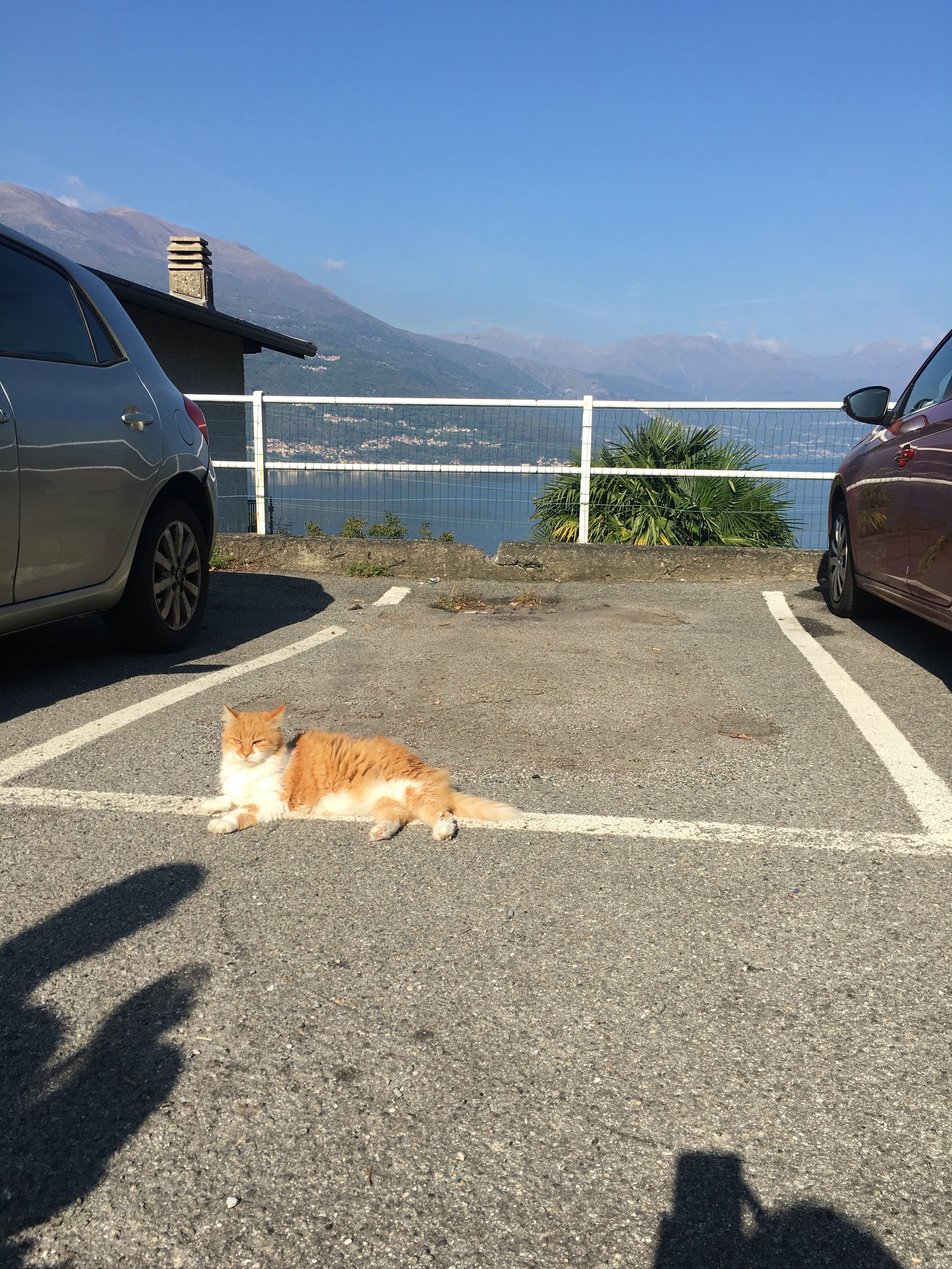
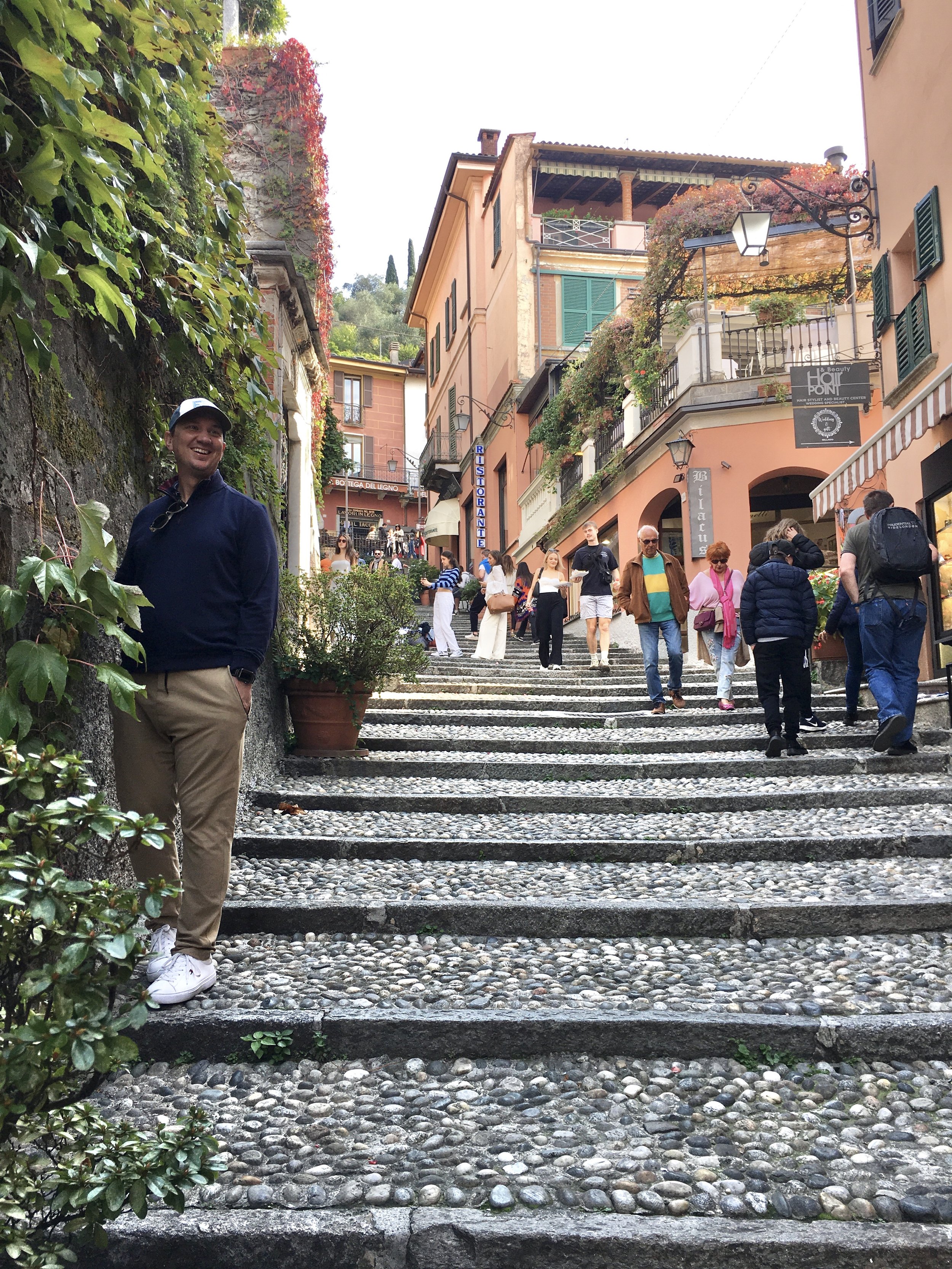
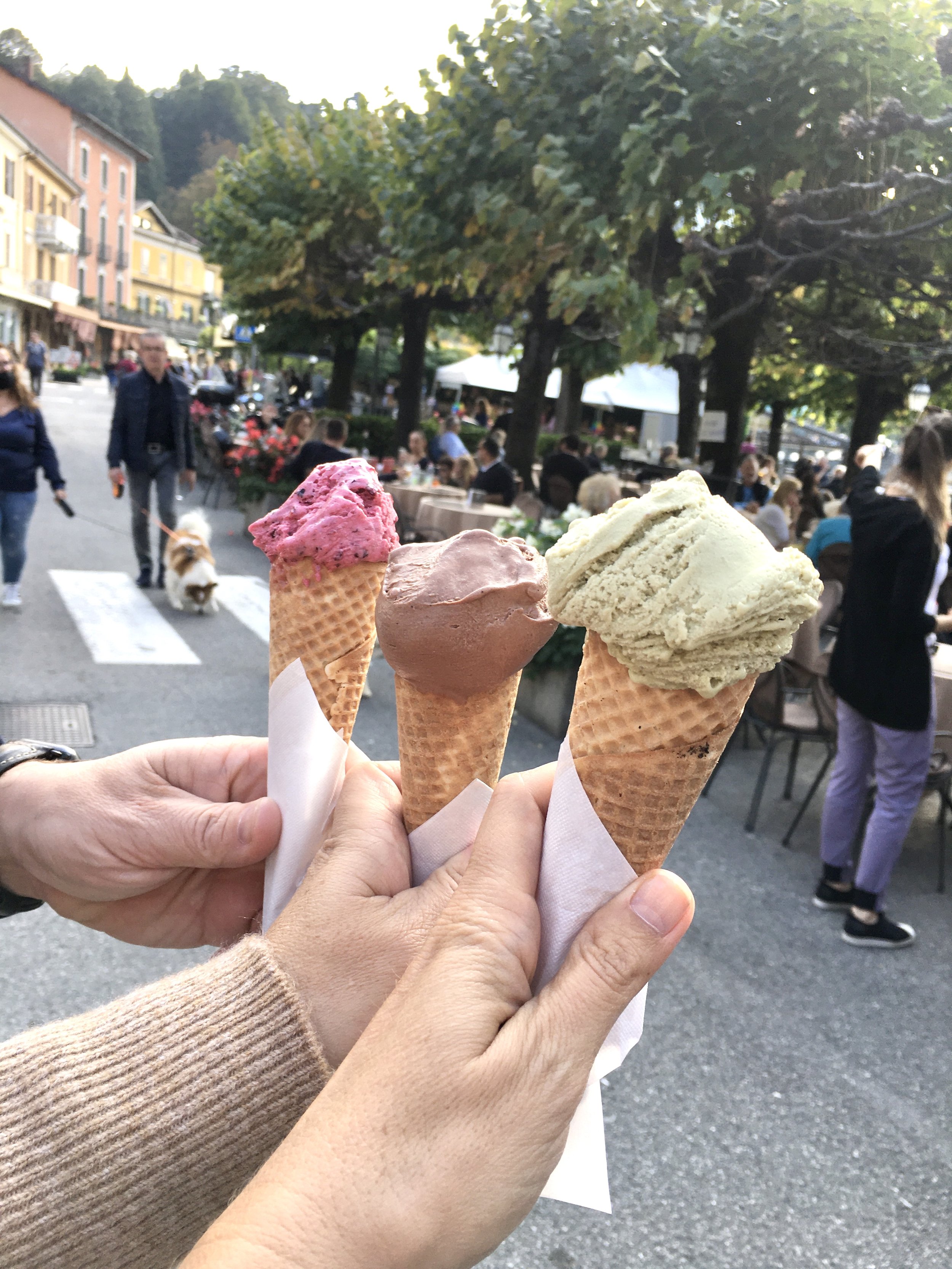
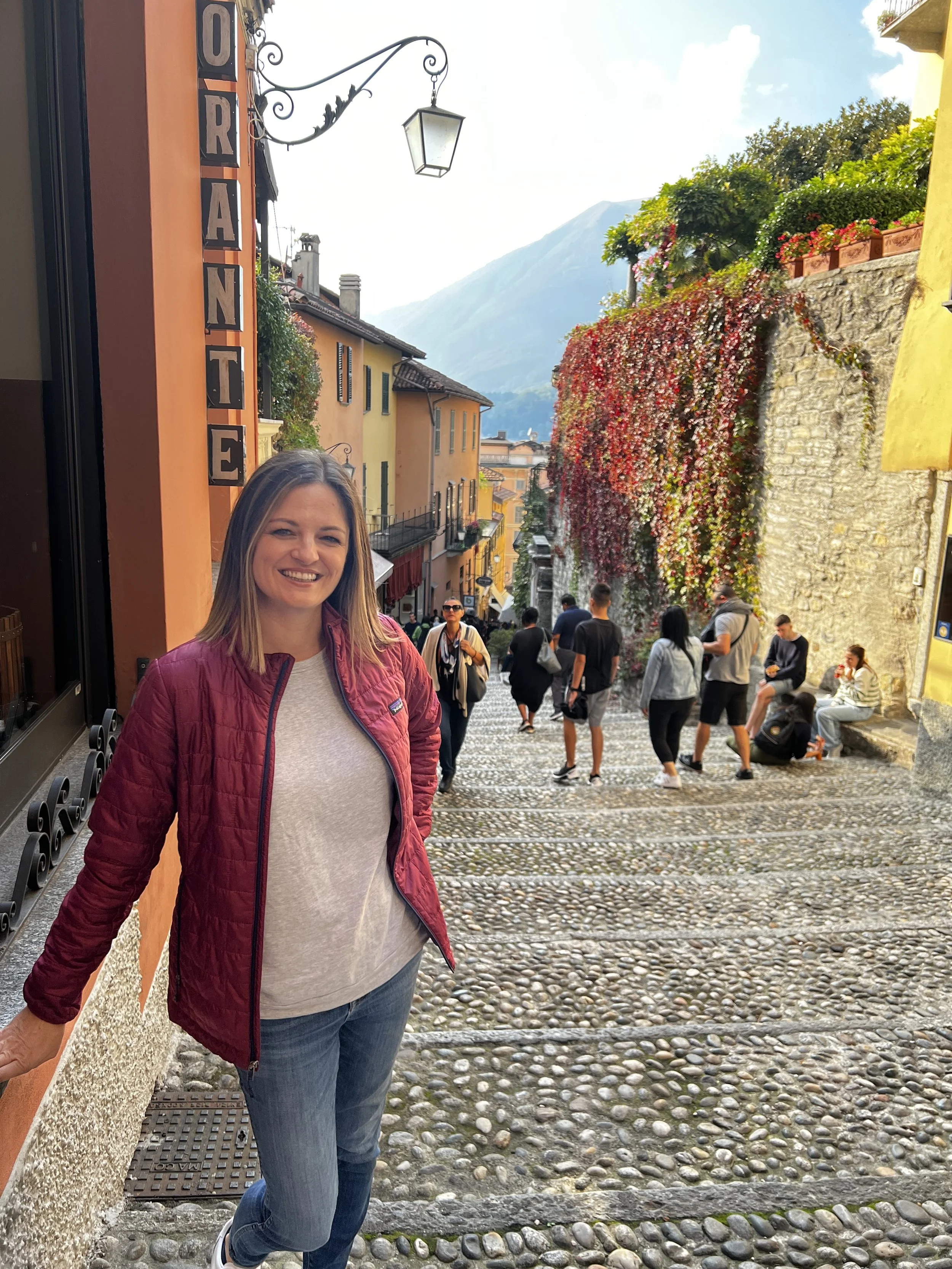
Under the Tuscan Sun
Florence/Tuscany
As the hub of the Renaissance, I was anxious to see the art of Florence; but as the home of the Tuscan countryside, I was equally interested in the culinary bounty. I was not to be disappointed on either front. We reached Florence by train and hoofed it a mile or more to our Air Bnb; by now it was mid-afternoon and we were growing hangry. Most restaurants were closed for the mid-day break to reset for dinner, but in one of those serendipitous Italian moments, we found a small rustic deli quietly open and devoid of patrons. There were no fancy signs and no more than four tables in the modest shop, but it was one of my most spontaneous and favorite meals of the trip. The others ordered flatbreads with buffalo mozzarella and cured meats that the butcher hand carved as we watched. My eyes, however, locked in on a Florentine specialty on the menu: lampredotto. Tripe in a special house-made green sauce. My tripmates’ faces also turned a special green when it arrived, so I’ll spare you details. But if you like menudo or pho with tendon and pigs’ feet, fist bump, my man. You get me.
The next morning, we drove into the gold-glinting Tuscan countryside to keep a special appointment. For Ryan and Kelly, this may be the most meaningful visit of every trip. It all started with a stellar online review, a reluctant trip to a remote village, to a nondescript butcher’s shop with hanging beads over the narrow door—a sight so unpromising, they almost turned around. However, they were quickly blown away by one of the most special experiences in all their travels. Paolo, a butcher and shopkeeper in yet another quaint and quiet village, hosts a local wine and food tasting in the lower level of his shop, and houses his family and parents in the upper apartment. The humble deli and cramped shop give no hint to the treasures below; but when you follow him down the narrow and worn stairs to the cellar, you enter an elegant room finely appointed with the most delightful of pairings. Paolo pours wine made from his own estate and constructs the perfect bite from local cheeses, marmalades, truffle honey, and nuts. He moves you in stages, from crisp rosè and lighter cheeses to red wine with aged cheeses and chocolate, while winsomely explaining the artful construction of these “aperitivos”—literally, “to open the appetite”—made to hit each of the five sensory areas on the tongue: sweet, sour, salty, bitter, and fat, as well as the contrast of the nuts’ crunchiness with the silkiness of the cheese. It’s perfect, but don’t fill up; there’s still another room.
Hearts happy and appetites opened, we move to the Meat Room. That’s what I’m calling it. We sit in a darkened room at a heavy wood table, and Paolo slices cured meats and slathers fresh bread with his own estate olive oil and tomatoes to pan sear panini for us. As we crunch through these toasty joys, he tells us the legend of Florence’s famous omission of salt in their bread. Around 800 years ago, Florence and Pisa got into a kerfuffle <checks notes> sorry, it was war, over the trade of salt, which in that day was twice the value of gold. (The word “salary” comes from the historic luxury of salt—“sal”—and its regular use as currency. Nowadays, we trash those extra McDonald’s packets and have sodium-induced health problems. So spoiled.) In protest, Florence began baking their bread without salt, which persists to this day. In fact, if you’re Florentine and you add salt to your bread, it’s not a matter of personal taste, says Paolo: it’s a political statement.
We return to the first room to end the tasting with “holy wine,” a sweet celebration wine the villagers gather to drink on November 1, All Saints Day, and which is produced by storing the grapes in barrels for nine years. A barrel is opened on the day of the celebration, quickly drained, and immediately re-filled with the next round of grapes—an ongoing village tradition. We place orders to ship home some of Paolo’s wine and olive oil, and he gives Ryan a special price. The friendship, and not only the tastings, are the reason Kelly and Ryan keep returning to Paolo’s tiny Tuscan shop. After their first visit, they enjoyed it so much they were determined to return the next year, which happened to be soon after Covid had stifled much of tourist traffic and even of local community. It had been a rough year, and Paolo was grateful for those travelers willing to make the trek. Kelly, who takes artful and heartfelt photos, had snapped a perfect pair of pics of Paolo in action, and they framed them and brought them on their next visit. The gesture touched him immensely, and the pictures are still displayed prominently amidst personal family items. When we arrived in the small hallway leading to the living area, Paolo introduced his aged father to the group. Through tears, he told Ryan, who had had our church pray for his father’s surgery one Sunday during service, “I thank you so much. I truly felt your presence during that time—it was the first time I felt that so clearly.” These Texans have become quite dear to this Tuscan. He even offered to let them stay in his beach cottage for free next time they visit—“for one? two weeks? You let me know.” I am pretty sure he meant it, too, completely.
As we were leaving, we passed a dank and dimly lit cellar with dusty wine bottles forming a loose pyramid on the floor. Kelly grabbed my arm and whispered, “Wait, you have to hear this story.” She called Paolo over, who eagerly explained the meaning of the simple wine cave. His father had been a boy in the village during WWII; after bombings began, the villagers quickly harvested the grapes so the crop wouldn’t be destroyed, and the boys helped bottle and informally label the wine. “The labels on those bottles,” he stressed, “they are a ‘mental tattoo,’ to never forget that time.” The wine inside is likely beyond its drinking bloom; but those bottles and their physical memorial, as Paolo vigorously affirmed, are, without question, “sin precio”— beyond price.
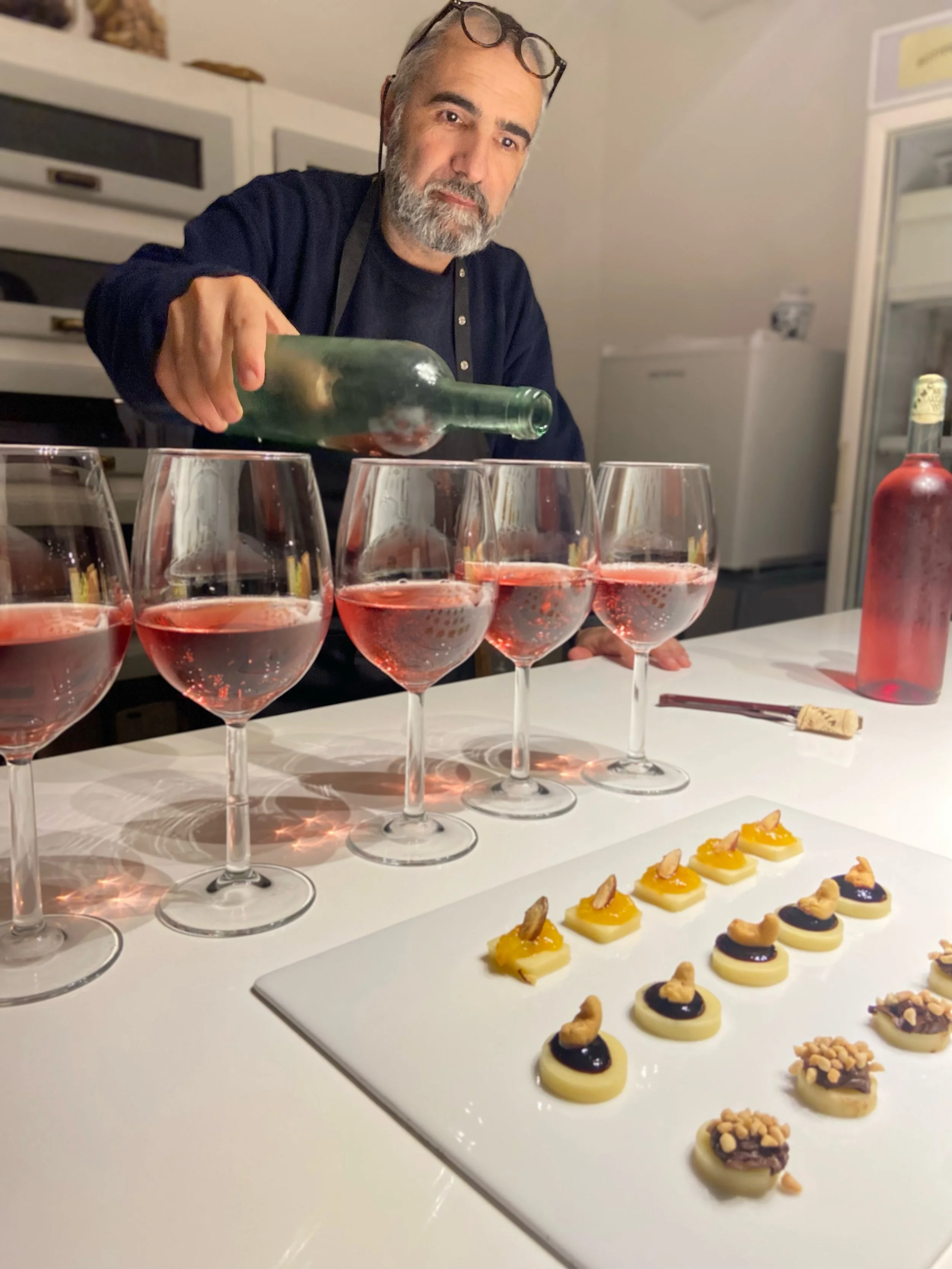
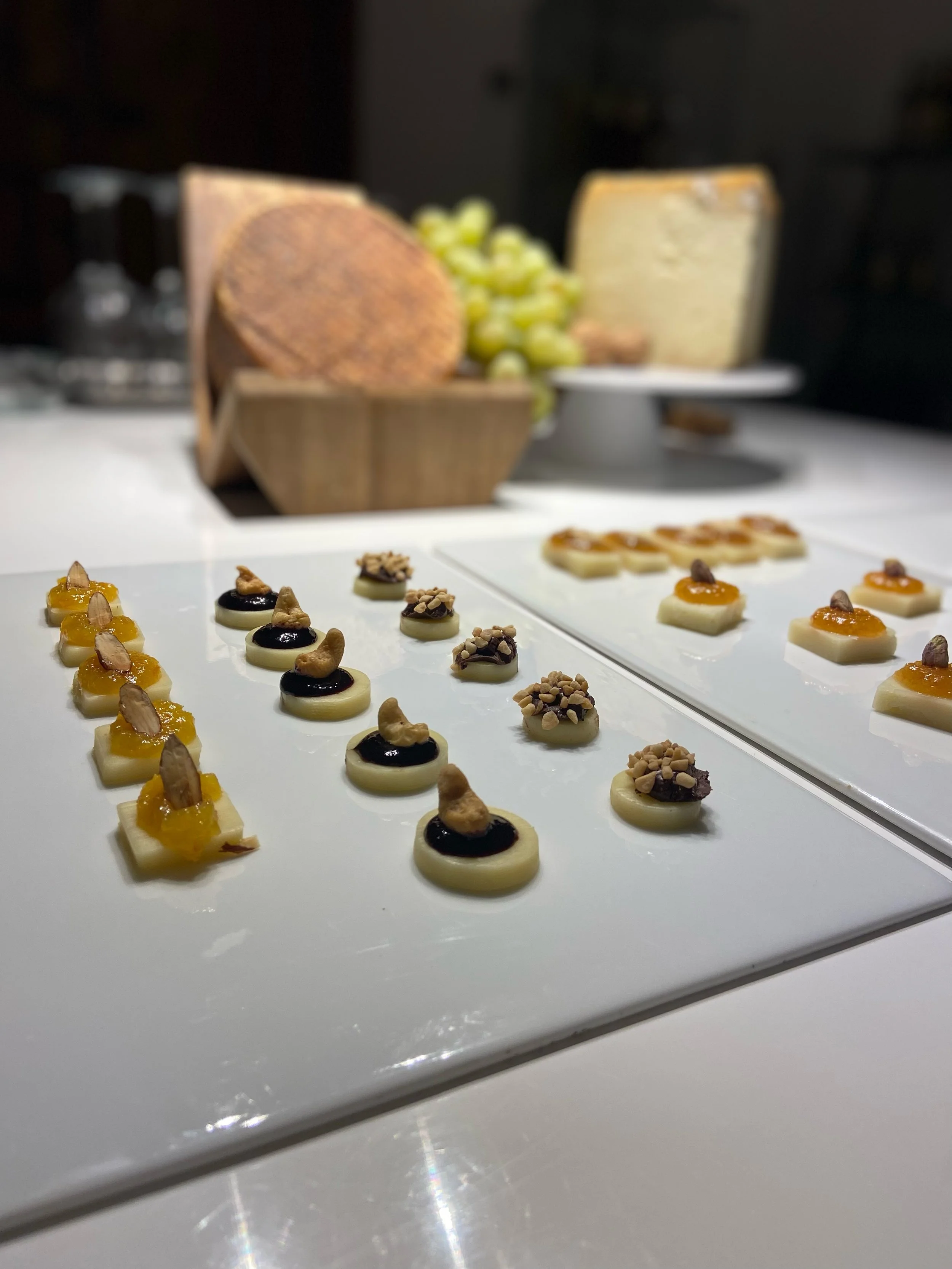
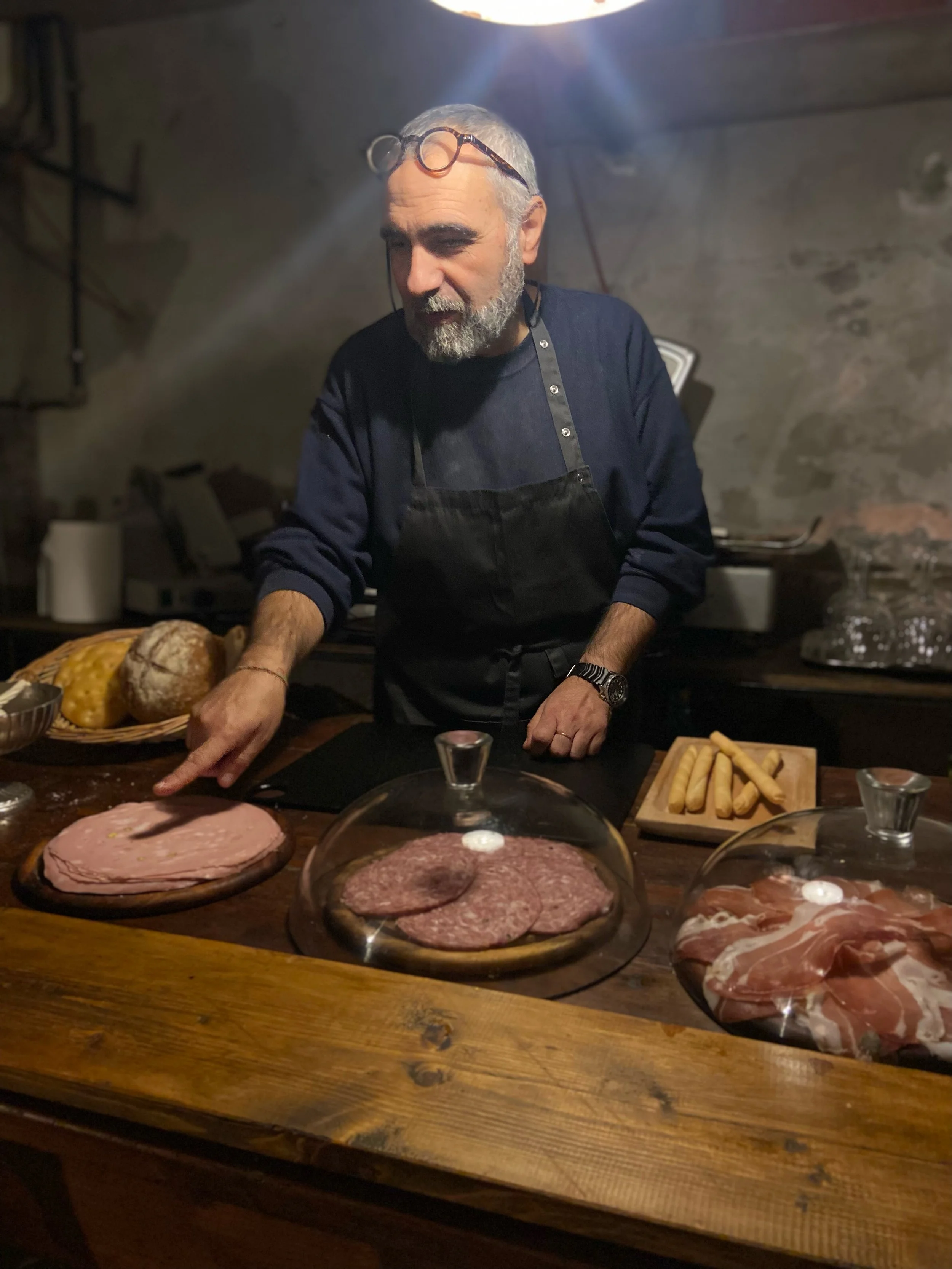
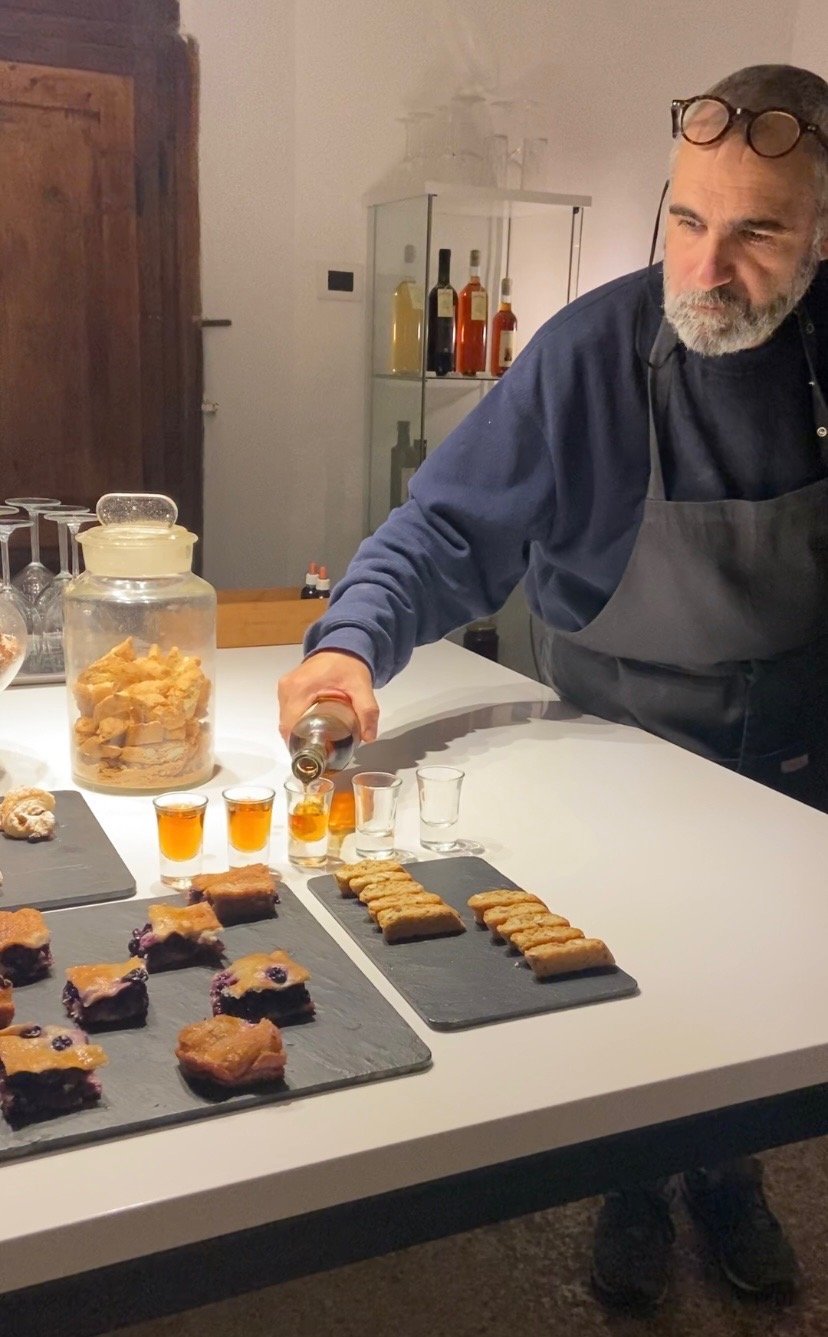
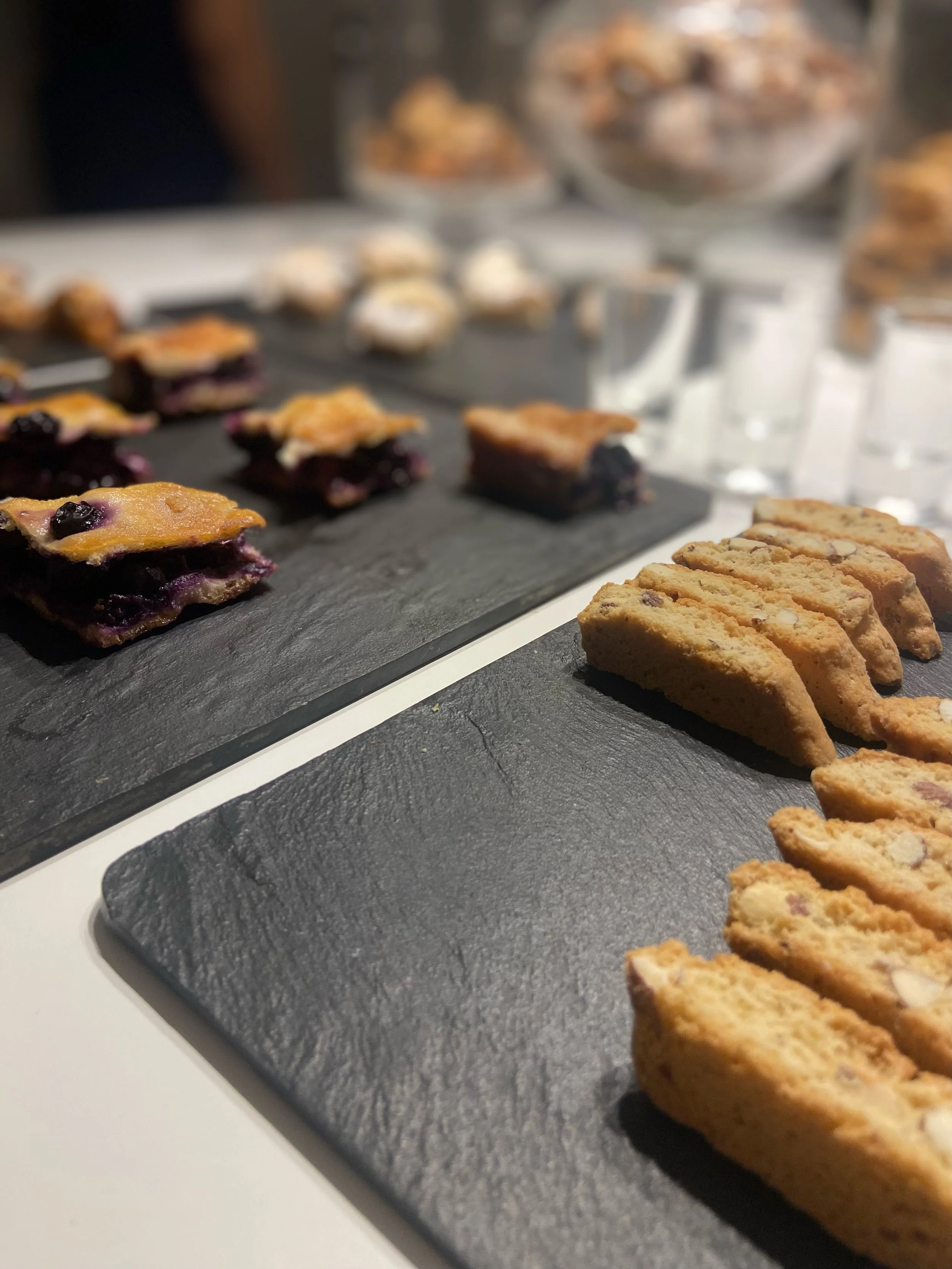
Apparently, David had to be “covered” when the Pope came to visit…
David
As we had only one full day in Florence, we drove back and quickly dressed for dinner, barely making the last scheduled tour of the Accademia Gallery. This was one museum I didn’t want to miss, home to many Renaissance paintings, prototypes of the first piano and original Stradivarius violins, and most famously, to Michelangelo’s David. Viewing this statue in person is an experience, in my opinion, to which the reproductions and pictures cannot do justice. The David stands at the end of a long and high room flanked with other statuary; even at a distance, it is visually arresting, but on approach, it becomes even more magnificent. I did not know its large size—17 feet, or two stories, and weighing 6 tons. But these would be meaningless dimensions, were the work itself not a monument of stunning grace. The praise for this piece through the ages has been for both its technical perfection and its physical grace. What is essentially a ponderous mass of marble looks surprisingly light on its feet. The pose is perfectly balanced, and David’s expression is confident but not brash, youthful but not naïve. One has the impression that this figure was not made; he exists.
I think the statue was also special to me because I had just stepped away from a semester taking Historical Books of the Old Testament. We covered David’s reign as king of Israel right before Fall Break (incidentally, perfect timing for this trip), and this man after God’s own heart looms large in the pages of Scripture and in my own heart, too. As the Bible invites every Christian to know, David is the ancestor of Jesus Christ himself, “great David’s greater Son,” and he is my ancestor and ancient history, too. If Michelangelo had formed a perfect statue of Zeus or Orpheus, I imagine it wouldn’t carry quite the same weight. This is a beautiful rendering of a man who stands tall in Biblical history, and I feel that the artist breathed special life into this block of marble. That is art. Michelangelo’s famous response to the question of how he fashioned the sculpture was: “I take a piece of marble, and I remove everything that is not David.” Ryan scoffed when I quoted this at breakfast, breathlessly expressing my fascination with the piece: “That doesn’t make any sense.” No, it’s not a technical statement on process, but it’s poetry; and in a way, it is more true.
Steep Amalfi
The Amalfi Coast/Sorrento
We now come to the Lifestyles of the Rich and Famous part of our program, the most purely hedonistic and indulgent. Sorrento competes with Como for being the Coffeys’ favorite Italian haunt for food, beauty, and sun-drenched bliss. Whereas Como is a cooler, northern hilly area surrounding a beautiful lake, Sorrento is a sunny, lemon-laden beach town on the shores (cliffs) of the Amalfi Coast. It has a laidback vibe and any number of al fresco dining options with a beautiful view of the water. (Actually, this is something I loved about Italy all over, the amount of casual outdoor seating, small tables with white tablecloths, heavy silverware, pretty décor and local olive oil, inviting you to sit and eat and drink wine or an Aperol spritz before heading out for more walking and touring. You never had to fight or wait for a table, it was just expected that casual shoppers would dip in and dine outdoors. One has to fight to be seated outside in San Antonio, and one only wants to sit outside two months out of the year.)
Aperol spritz—an Italian cocktail invented during WWII, and Leonor’s and my favorite
Sorrento is famous for its large, ripe lemons, and in fact is the birthplace of limoncello. It is custom here, and in other parts of Italy, to end the meal with a small glass of the cold, lemony sweet liqueur—many restaurants serve it at the end of dinner, included. We spent several days eating, shopping, and enjoying drinks and olives on a high hotel balcony overlooking the coast. Sorrento is the strangest cliffside village; I can’t imagine how they built up onto the cliff, but the hotels overlooking the water somehow sit flush with the cliff below. The jagged levels of the town are also baffling. We stayed in a gaggle of apartment buildings reached by climbing a slowly sloping street; from my window, I could look up up up into the neighboring hill on which were built a few precarious homes, and on my way into town, I would peer over a railing down down down into this deep recess behind a hotel just off the street, at the bottom of which sits a large, decrepit old building—super creepy with crumbling walls and flora taking over the first floor. First of all, who has a crevasse with an abandoned building in their backyard? And secondly, how did anyone even get down there? Walking through Sorrento, one is often confronted with such elevation oddities; I don’t know how it works, but it does.
Not ones to stay confined to the Amalfi shore, we rented a private boat and jetted up and down the Amalfi coast. We disembarked for a drink in bougie, boozy Positano, then boated to a sunny restaurant on the water with the most perfect marinated pulpo (octopus) I’ve ever tasted. (Incidentally, this happened to be the same restaurant Stanley Tucci talks up in his show on Italian cuisine, particularly a zucchini pasta that blew his mind. We had noticed this one greenish dish kept being delivered to all the tables, and we were like, “Do they know something we don’t?” Yes. They knew Tucci.) Afterward, our boat guide, Tony, gave us a private tour of the famous green and white grottoes of Capri. Normally in summer, the space is so packed, you have to wait half an hour just to circle through and get out. Since we were there in an off season (October), traffic was so minimal that we got to idle in the grotto, and Juan Alan jumped in and swam through the cave, gliding cleanly through water that looked like a crystal sea of berry blue Kool-Aid or Baja Blast. Maybe I just lost travelogue cred with that description, but isn’t sweet gratuitous soda on a summer day the best way to describe the feeling of whirling through juicy blue water? On our way back, we glided by Dolce and Gabbana’s epic summer home on a secluded and snooty cliff of Capri, and as I marveled, I also thought how fleeting is life and how swiftly doth death make a mockery of our misplaced priorities. (Look, I’ll travel my conflicted and grief-tinged way through a beautiful boating day, and you travel yours.)
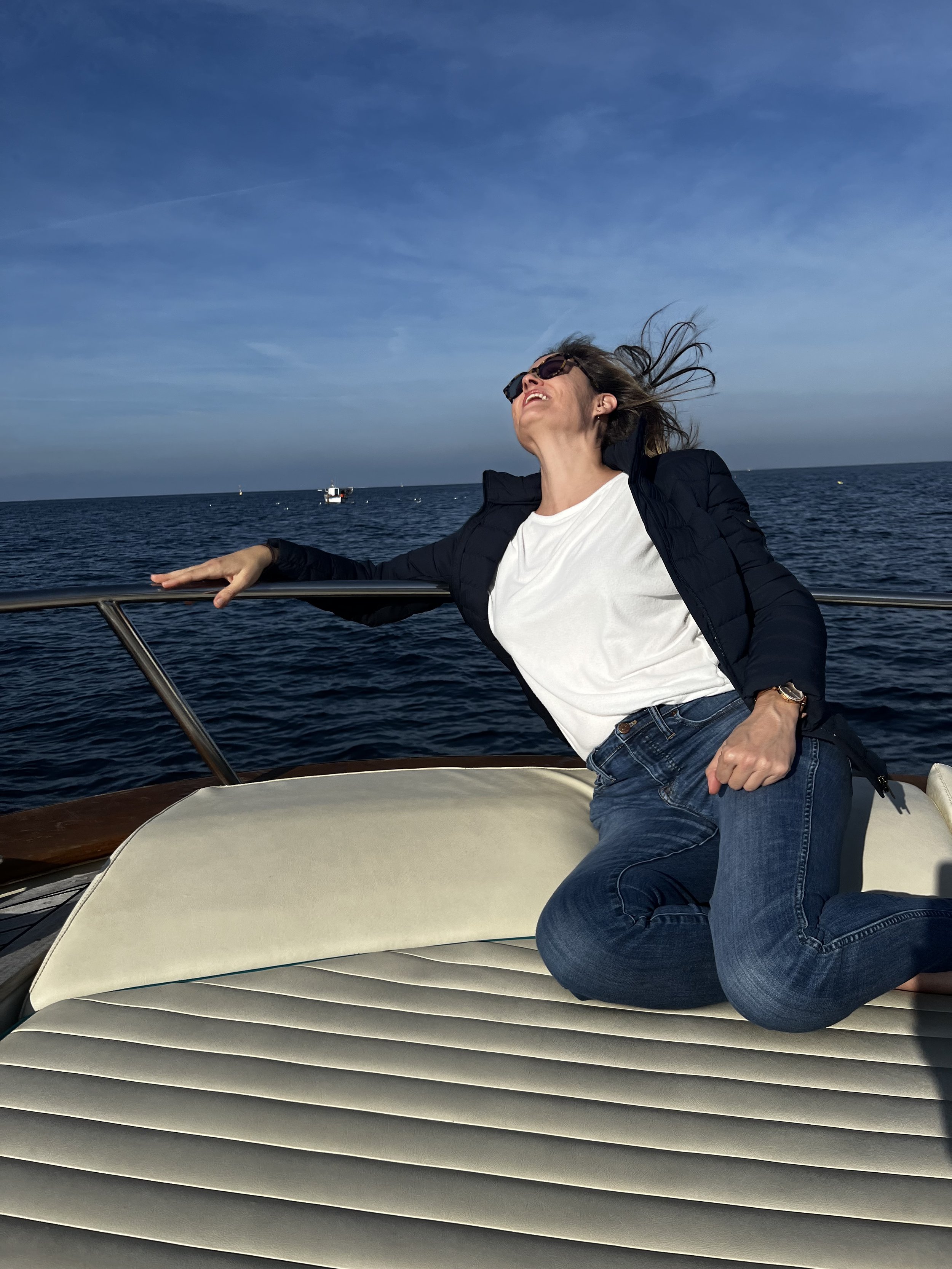

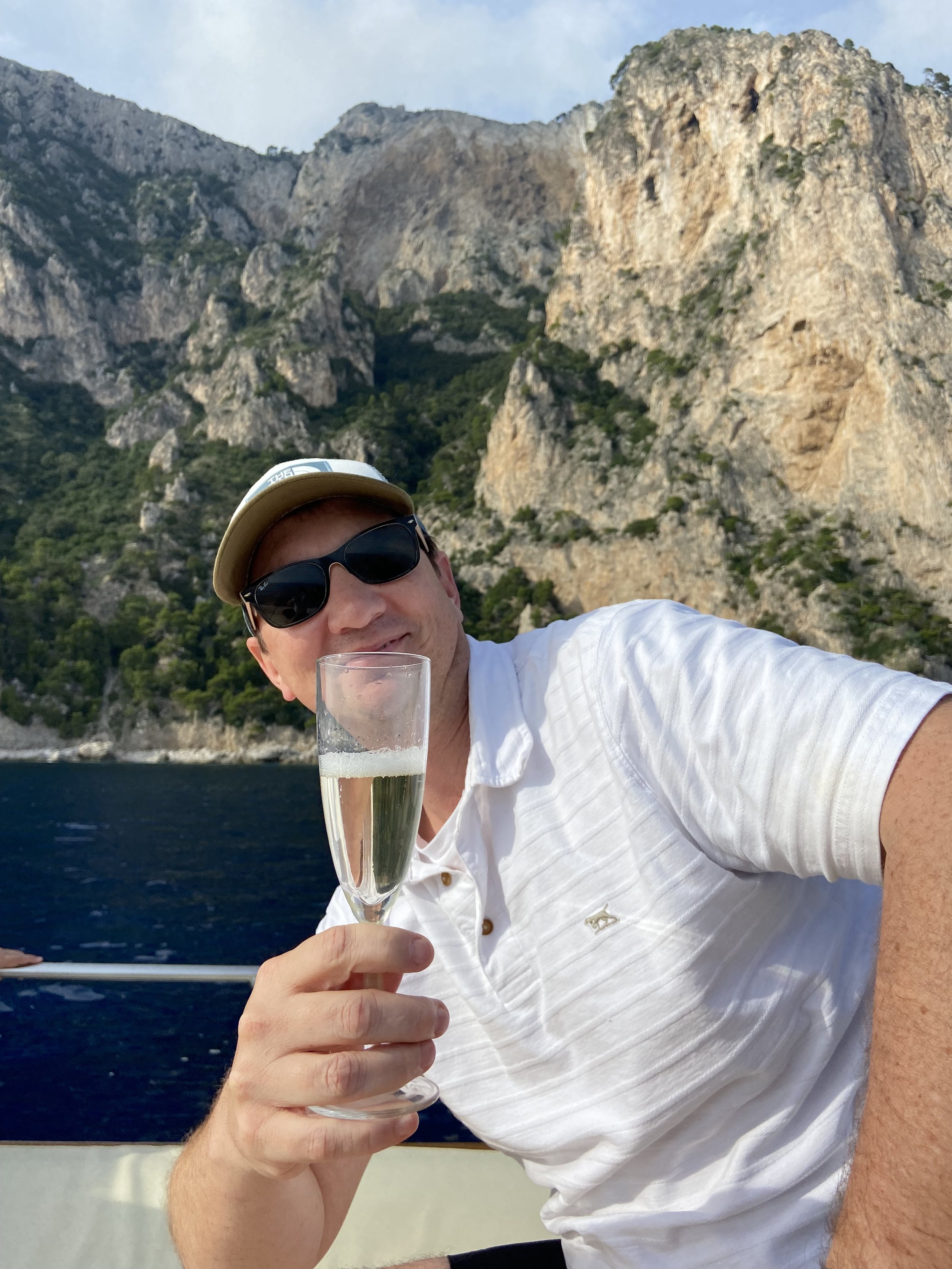
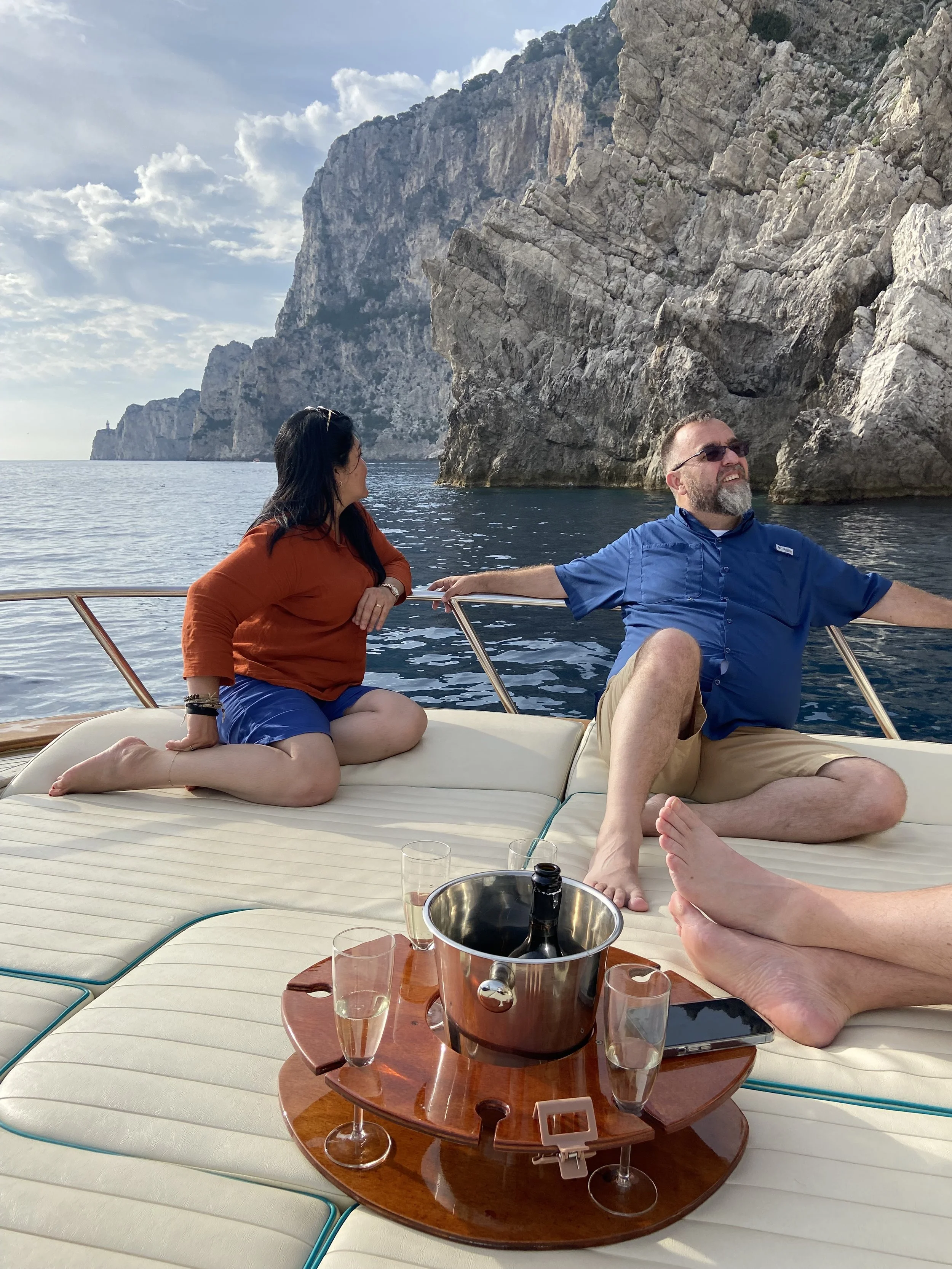
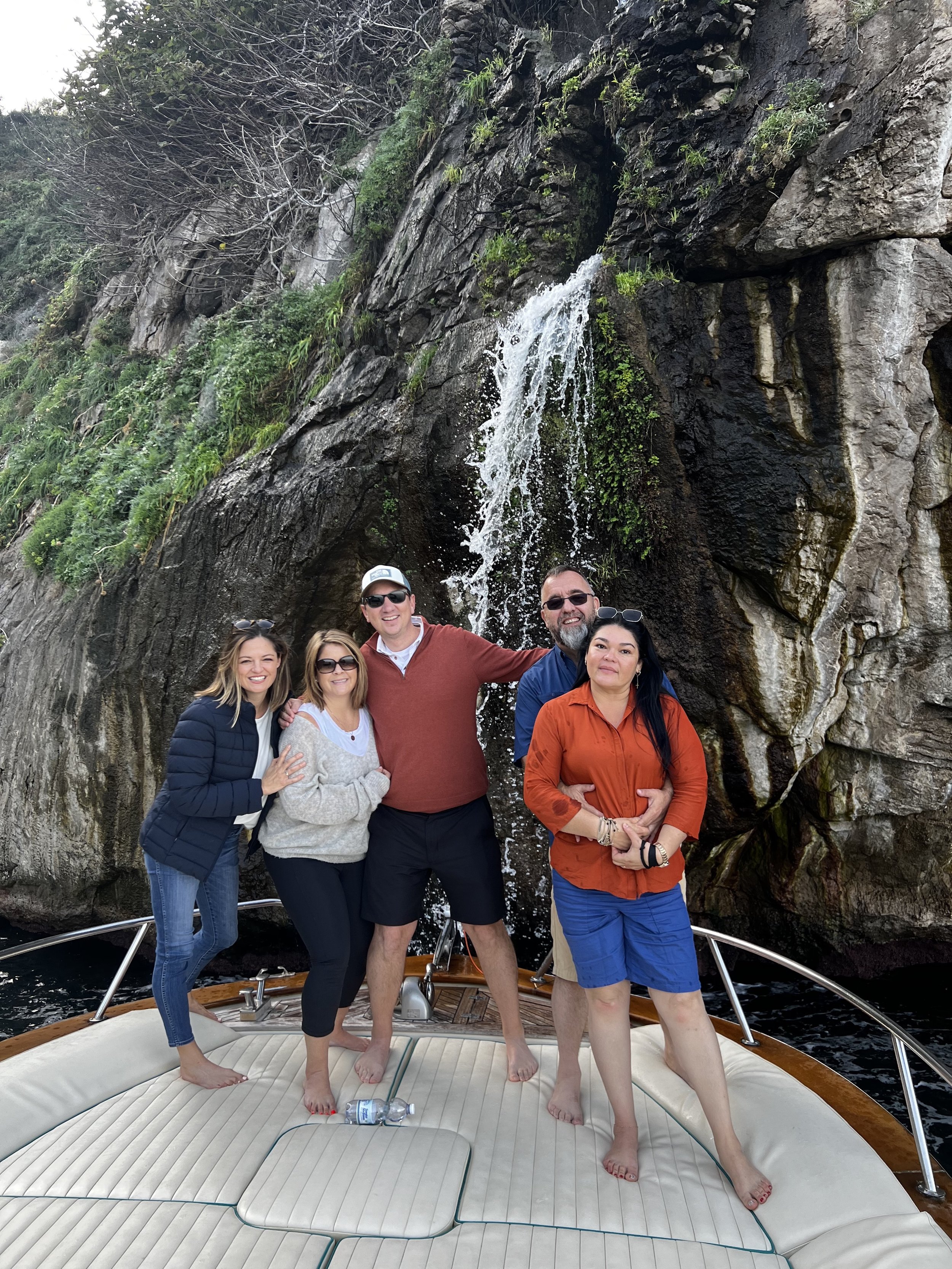
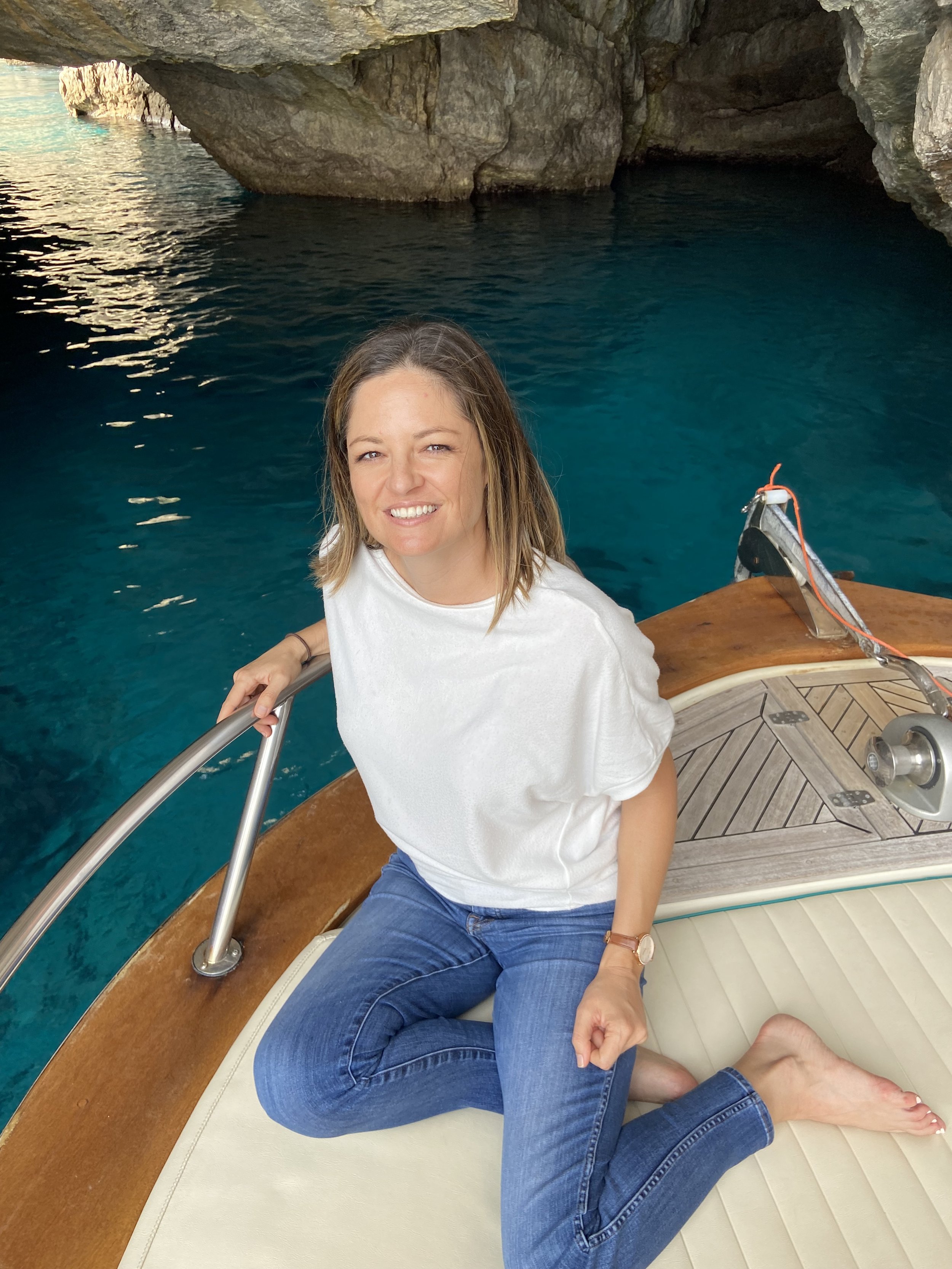
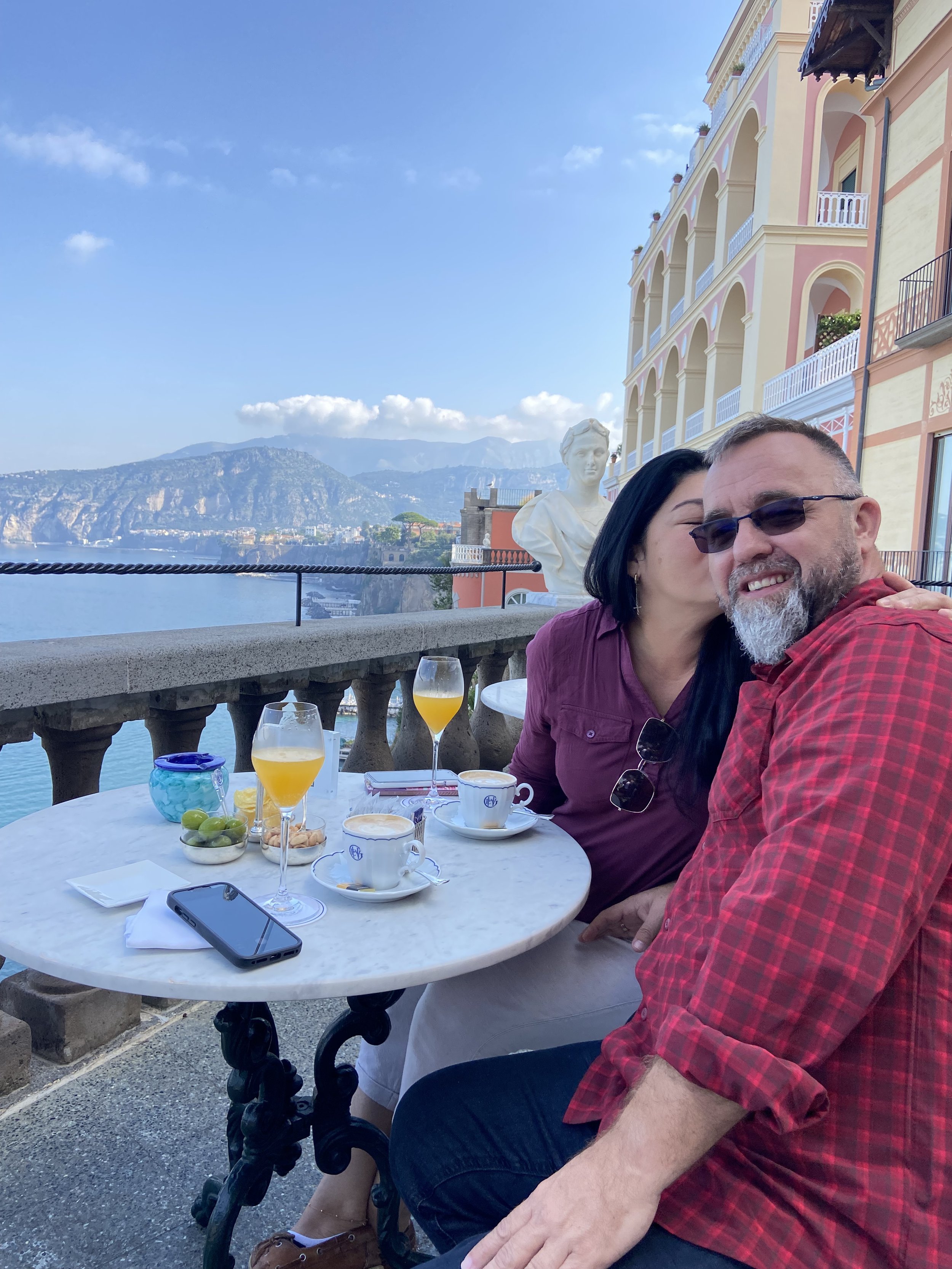
Rome
We were scheduled to take the train to Rome from nearby Naples, and this is one time we were glad we chose not to drive ourselves. We had hired a driver to pick us up in Sorrento, and the ride was pleasantly uneventful until we slammed into morning rush hour in Naples, with a stampede of drivers honking harshly, shouting, shoving into lanes and cutting each other off, and motorbikes taking to the sidewalks. All rules were off the table, it seemed—get in where you fit in. Luckily, Marcella, our driver, was a seasoned pro. She broke zero sweats while we all silently performed our last rites. At one point she rolled down the passenger window, leaned across Juan Alan to the driver squeezing as close as a lover yet clearly trying to ignore her, and excoriated him in inflammatory Italian. Then she rolled up the window and waved her hand airily. “Naples. It is overcrowded. Like this every morning.”
We survived and refreshed ourselves with espresso in the train station as we waited for the (much quieter) train to Rome. I was amused to glimpse a piano sitting off to the side of the food court. The sign said something to the effect of, “this piano is for all our patrons, please respect it as you would at home,” and a teenager sat down to play “Clair de Lune” before rushing off to catch his train. You know. Because Italy. We departed for Rome, and I was excited to end in the Eternal City, yet not sure what to expect. Was it eternal due to its rich and storied past, or because it continues to persist and thrive in the present? As soon as we stepped out of the station, I saw that, in fact, it is both. I’ve never encountered the old and the new existing so gracefully with each other as here, with the new neither razing the old nor relegating it to a cordoned off museum case, but rather wrapping and molding itself around the old in an evolving interplay of ancient and modern. As we taxied to the apartment, we passed an ancient and crumbling long brick wall from who knows how many centuries before, yet standing peacefully at the corner of a busy street and modern shops, with pedestrians and cars revolving respectfully around it. What was it? I don’t know—it was old, and it was still here. And Rome just carried on building around it.
The Trevi Fountain is cool, but the crowds swarming all sides make it feel like trying to shove through a Sea World show to get up to the Splash Zone.
The streets are weathered and cobblestoned, yet lively with traffic, reminding me instantly of so much of Europe. Drivers whiz by in their small cars and sea of motorbikes here as all over Italy. (I love that all types ride a motorbike here, more out of necessity for narrow and congested streets than out of young stud rebellion. You’d often see middle aged businessmen in suits and leather shoes riding motorbikes right next to a young couple out for a joy ride. And there are always bikers in the street, all ages, at all hours. Many times they have a bike lane, but sometimes they don’t, and you must simply wait for them to move insouciantly out of the way. Try that in Texas.) We visited the Trevi Fountain, which was much bigger—and way more crowded—than pictures let on, and also randomly situated, it seemed, in the middle of some nondescript square in a corner of town. Then we took a short walk over to the Pantheon, which, again, isn’t some fenced-off relic but rather planted calmly in the center of a cobblestone street, facing gelato stands and corner stores and apartments. It’s all Rome, and it all fits. We walked through more side streets to emerge onto a piazza—I don’t know which one, there are apparently hundreds of them—which was long and bustling with people, statues and fountains presiding over the center, an immense old church flanking the square, and of course, open air restaurants lining the whole thing. We slipped into one and people-watched as I ordered the Pasta Amatriciana I had been waiting to try in Rome (pork cheek and tomato sauce with chiles). Buonissimo.
Writing trip notes outside the Vatican while this guard yelled at everyone in line and this guy smoked on top of me. I hardly noticed.
We got to tour the Vatican, for which I am grateful, as there were a couple of legendary paintings I wanted to see, including, of course, the Sistine Chapel. The crowds, however, are legion and suffocating, and the experience was frankly exhausting. Be prepared for countless rooms and a neverending exit once you’ve seen the Big Kahuna. (The Sistine Chapel, not the Pope. He’s not part of the tour.) The mother of all relics, however, and saving the best for last, was the Colosseum. Once again, one traipses down normal and nondescript streets and suddenly turns the corner to encounter a gargantuan figure of stone in the middle of town, this now familiar series of café-apartments-café-pedestrians-crosswalk-COLOSSEUM. It almost looks like a movie set piece, were it not so commanding and real, soaking up all the oxygen in the room. I realize many modern structures rival the Colosseum in size, but they’re not made of solid rock and marble, and they don’t sit, ancient and imposing, at the corner of streetlights and honking motorists. Bizarre, this Rome. But enchanting. We toured inside, and I enjoyed the open-air exhibits and renderings of the original structure and “found” detritus that dropped through the seats, like coins and makeup holders, and stone seats discovered to have graffiti engraved on them—crude drawings of the games and your typical “Publicus wuz here,” but, you know, in Greek. (Remember when tagging was legit hardcore because you had to etch it into rock? None of this spray can princess party child’s play. Kids these days are so spoiled.)
We snapped pics on iPhones as the setting sun glinted through the gorgeous, empty remains of what used to be a colossal (yep) and fearsome arena for violent blood sports and horrific punishments. As it stands, we had to wait for the Instagrammers to finish with the prime spots so we could snap our own Colosseum pics in perfect lighting. And here again, I mused on the evanescence of life, and the eventual end of all earthly powers. What would Vespasian and Titus say to their mighty structure ending up as a $30 background prop in an “influencer’s” latest FOMO feed? What of the foreign families taking grinning selfies at this former daunting display of worldly power, and then leaving to get gelato? As I slapped the solid stone of the walls, I thought of the passage I had read just that morning: the wise man, Jesus had taught mere decades before, builds his house upon the true Rock, while the fool builds on sand. Here, the grandest stone has given way to the sands of time. Still, we visit these crumbling power plays of former ages, and we go right on building. Centuries display their eventual demise, poets capture the sad irony and wisdom literature is rife with the theme—but every generation insists on building its own sand castles until the winds of the ages blow them away.
These were my thoughts in this most glorious and defanged of monuments. And then I too left to get gelato. Because I was in Italy, and I am a great lover of food and art and the good things of earth and life and human achievement. I just can’t give them my soul. I can give them ten days and an open heart and stomach. For that, Italy more than delivered.
Grazie, Italia.
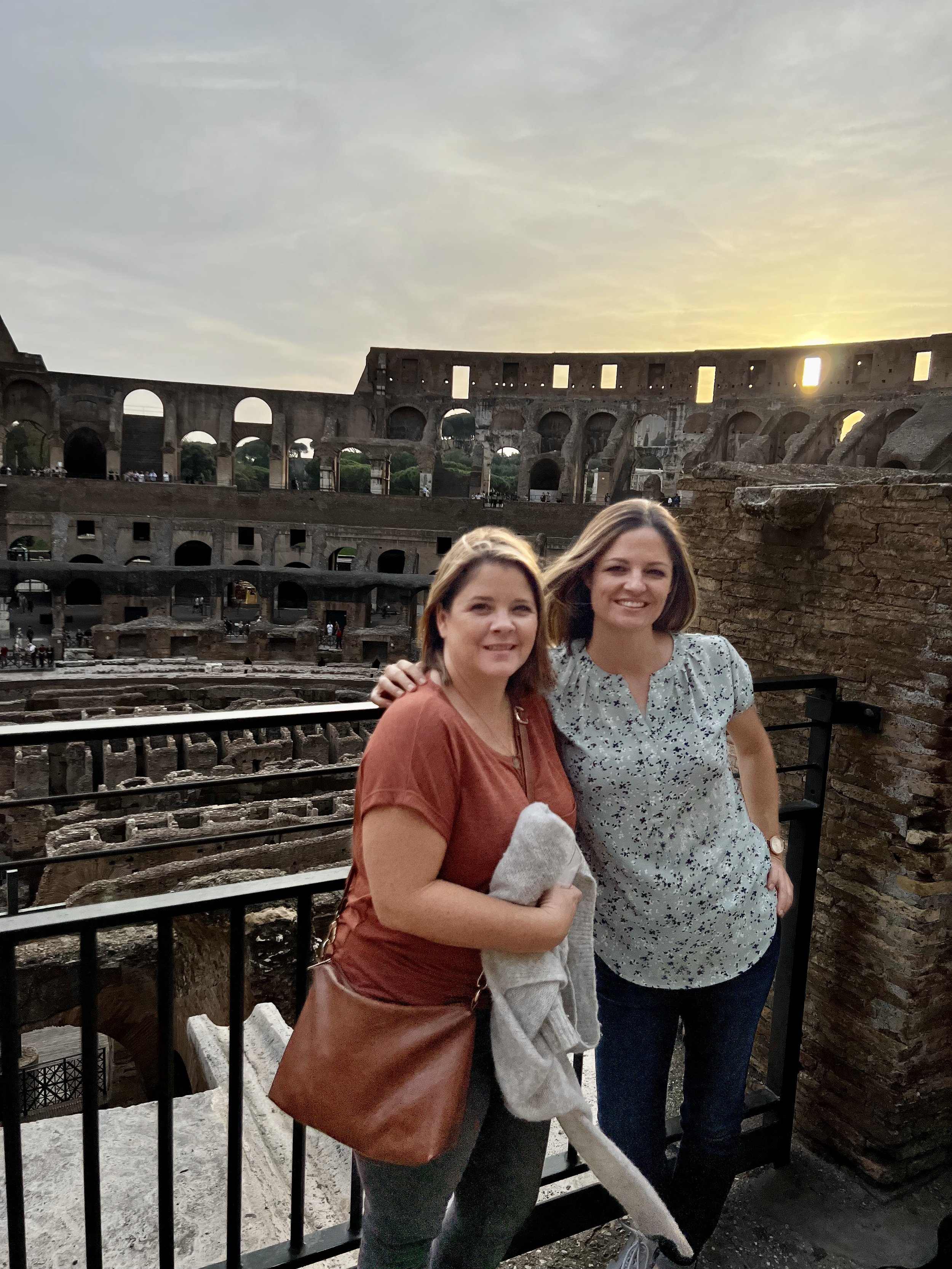
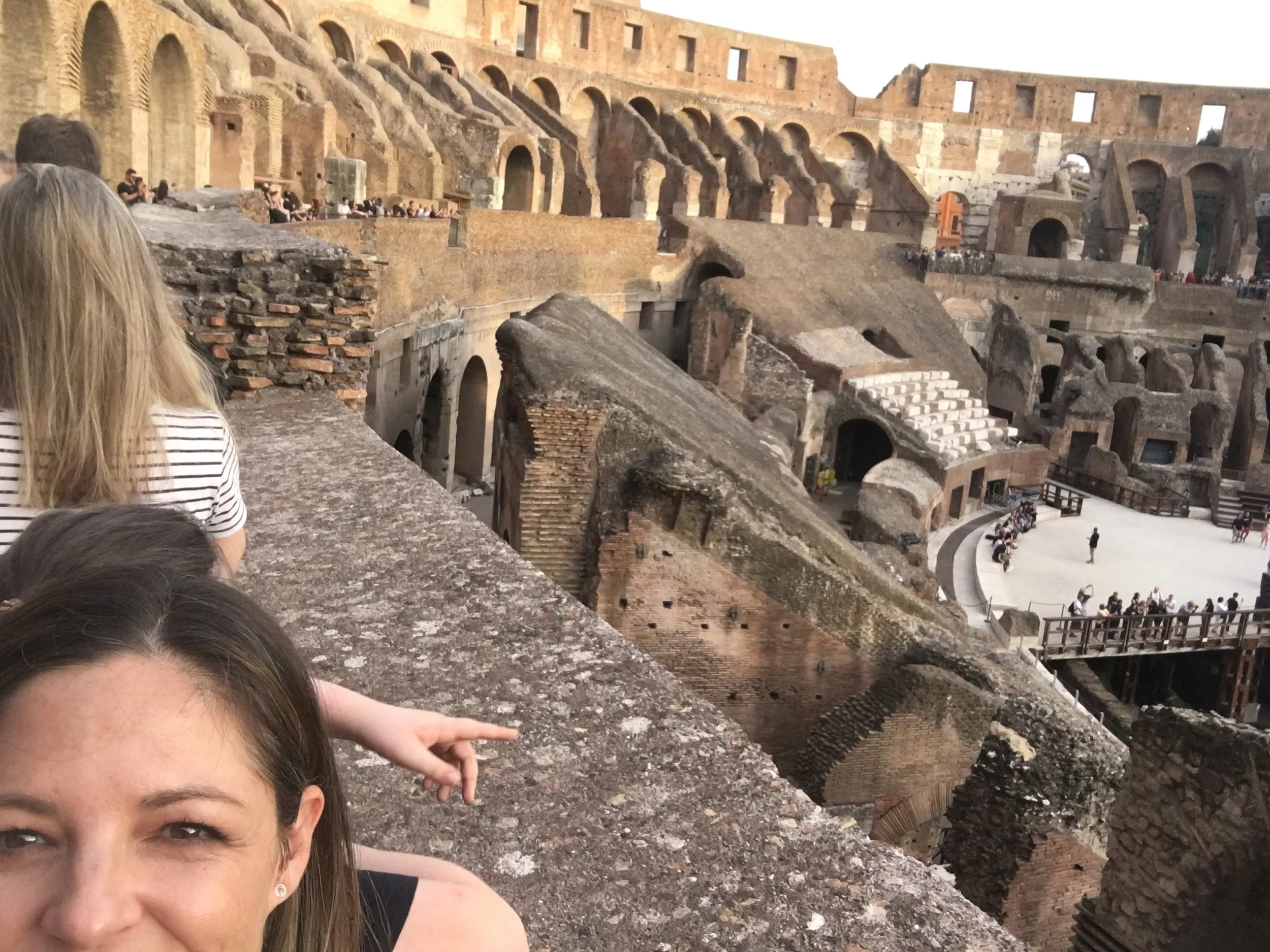

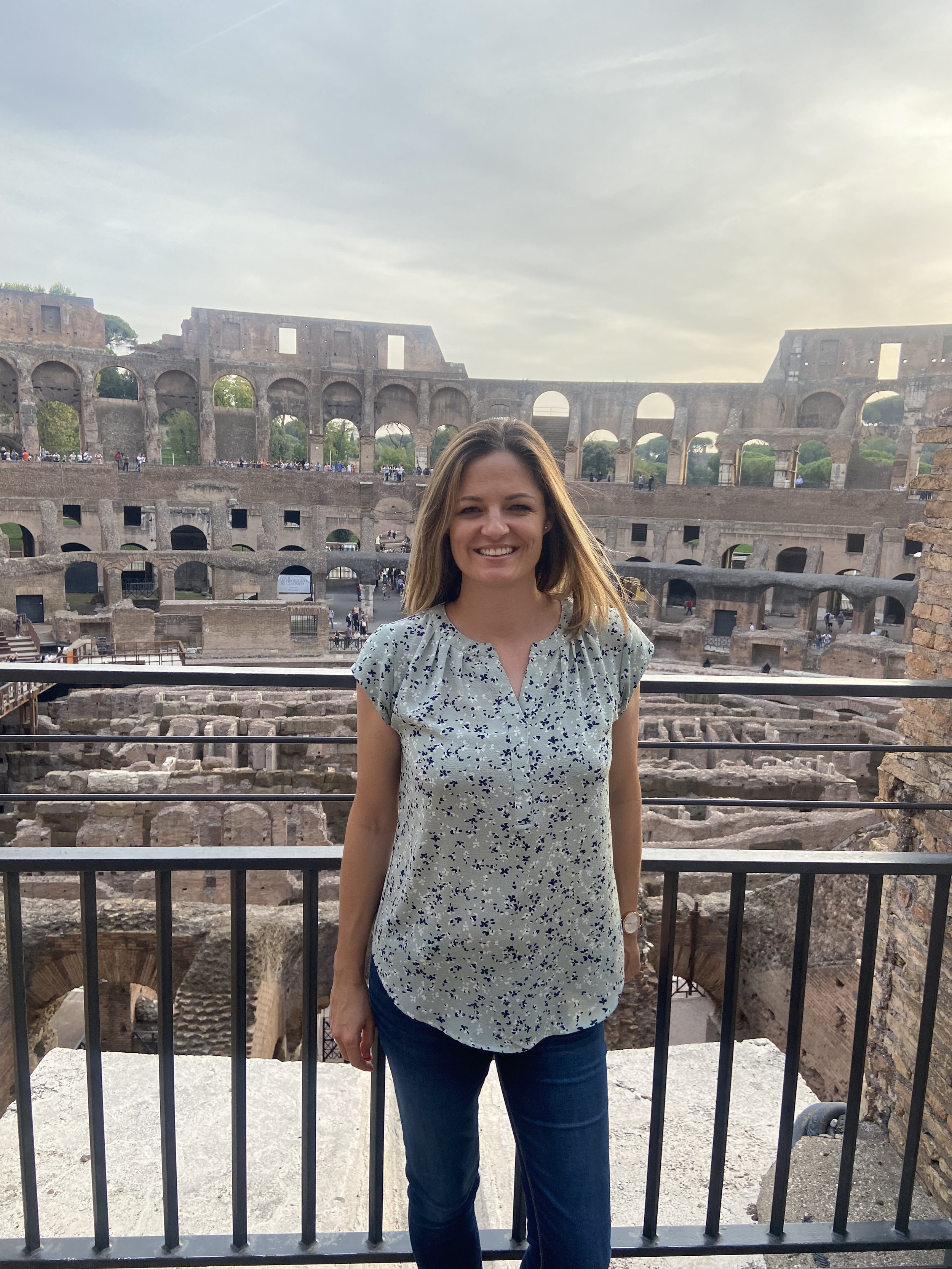
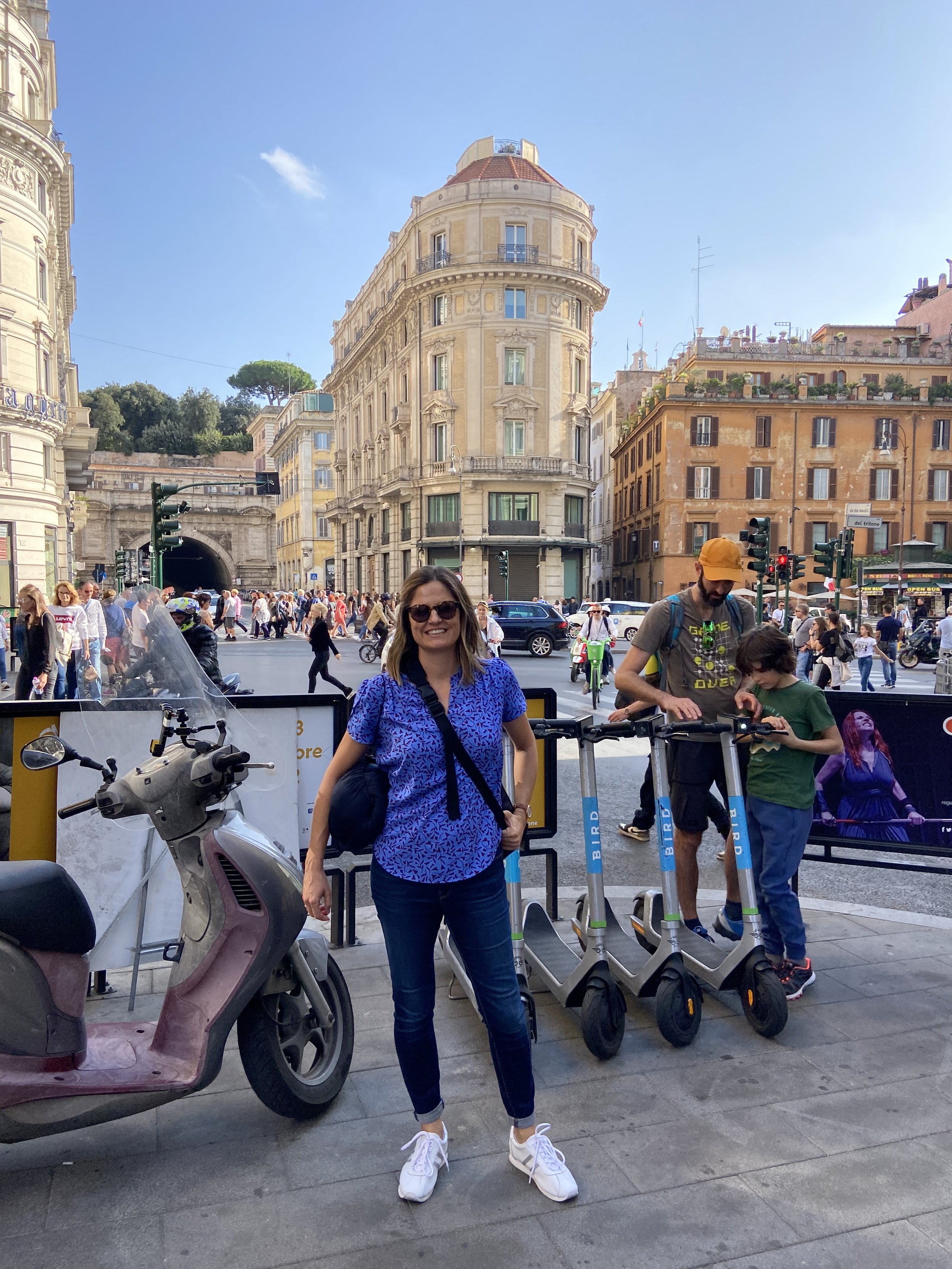
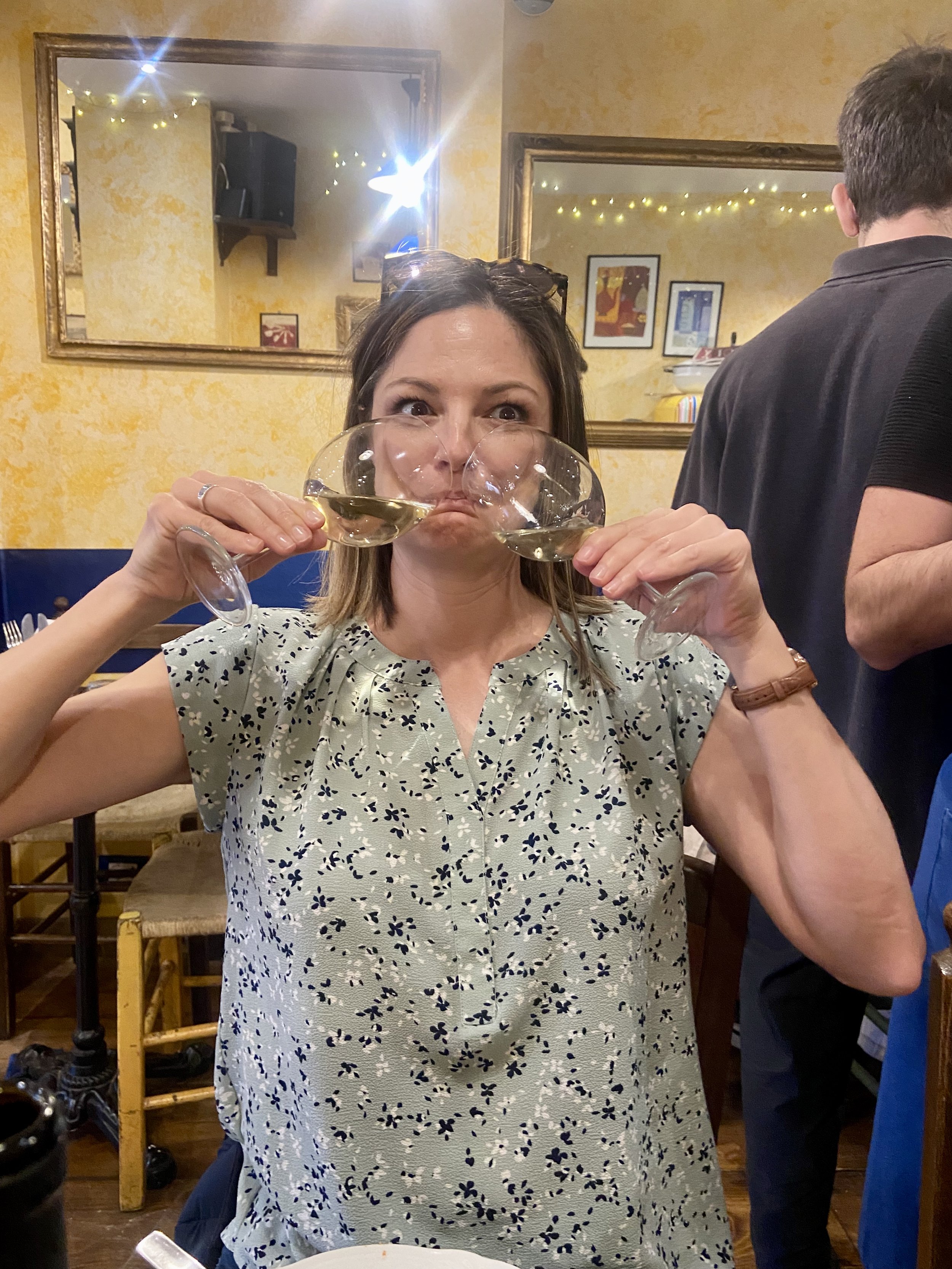
**And a colossal thanks to Ryan and Kelly for generously allowing me to jump onto their lovely vacation, and to Kelly for providing such wonderful pictures to help tell the story.
[1] I’m tongue-in-cheek including England here. Some of those deep countryside accents require serious subtitles.



